 |
[ Outlaw Genealogy | Bruce
History | Lost Chords ] [ Resources | Ufo | [ Projects | News | FAQ | Suggestions | Search | HotLinks ] |
 |
[ Outlaw Genealogy | Bruce
History | Lost Chords ] [ Resources | Ufo | [ Projects | News | FAQ | Suggestions | Search | HotLinks ] |
| - - - - - - -
http://wis-wander.weizmann.ac.il/chaim-weizmann
Chaim Weizmann 1874 - 1952
Chaim Weizmann was born in 1874 to a traditional Jewish family in the small
town of Motol in White Russia (Belarus). After graduating with honors from
the Real-Gymnasium in Pinsk, he decided to establish himself professionally in
order to be able to contribute to the development of science in the Land of
Israel. He chose to study chemistry in Germany and Switzerland, where he would
meet his future wife, Vera, who would become his partner in Zionist activity. In
1899 he was awarded a doctoral degree in organic chemistry by the University of
Fribourg in Switzerland.
Deeply influenced by the views of Ahad Ha’am and Herzl, Weizmann became
involved in Zionist activity, alongside Leo Motzkin, Nahman Syrkin, and
Shmaryahu Levin. He felt that Judaism implied not merely religion but peoplehood.
Possessing their own language, culture, and common historical memory, the Jewish
people were entitled to return to their historical land and live there in
safety.
Weizmann therefore rejected the idea that Uganda could replace the Land of
Israel as a homeland for the Jews. At the same time, he began working as a
scientist at the University of Manchester in England, a nation which he viewed
as one of legal freedoms, moderation, and political realism.
...
A skilled negotiator, Weizmann secured for himself the status of
representative of a government in exile. That was how he obtained, with
arduous effort, the coveted Balfour Declaration on November 2, 1917. In it,
the British government recognized the right of the Jewish people to establish a
national home in the Land of Israel. Weizmann: “We begin a new chapter. From
now on, we – the Jews – will determine how the Declaration is to be
translated into reality.”
As befits a scientist, Weizmann pursued his goals systematically, step by step.
Once the declared right to the territory was obtained, he worked to strengthen
and anchor it in reality.
He departed for the Land of Israel at the head of a delegation under British
government auspices, and found the Jewish settlers engaged in the dynamic
process of building and aliyah. Tel Aviv, the first Hebrew city, arose from the
sands.
Understanding that Jews and Arabs would have to live together in the Land of
Israel, Weizmann strove to create peaceful coexistence between the two peoples.
Thus he met in Aqaba with Emir Faisal, leader of the Arab national movement.
Faisal expressed sympathy for the Zionist cause, which he felt was similar to
the Arabs’ national aspirations. [ Laurence of Arabia ]
In 1919, Weizmann and Faisal signed an agreement of cooperation between the
two national movements, Jewish and Arab, for the development of the Land of
Israel.
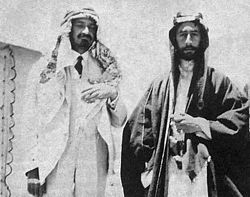
1918. Emir Faisal I and Chaim Weizmann (left, also wearing Arab outfit as a
sign of friendship) Weizmann first met Feisal in June 1918, during the
British advance from the South against the Ottoman Empire in World War I. -
Faisal–Weizmann Agreement
http://www.zionism-israel.com/bio/Louis_Brandeis.htm
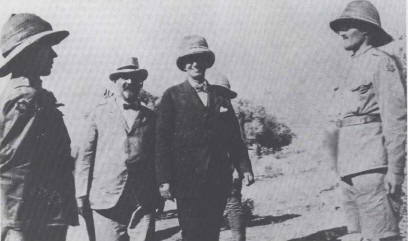
Louis Brandeis in Palestine (center, in pith helmet) with Chaim
Weizmann and British soldiers, 1919
...
At a crucial moment in the deliberations of the British government regarding
the Balfour Declaration, American support was needed.
Brandeis apparently got President Wilson to reverse his policy of
non-intervention, favored by his adviser Colonel House, and to provide the
necessary support, still insisting that it must not be made public.
Brandeis helped to organize the 1918 Pittsburgh conference of the Zionist
Organization of America, which evolved from the American Zionist Federation and
which, at that time, was truly representative of American Jewry. T
The platform was remarkable for its synthesis of Zionist and progressive ideals,
and many of its ideas seemed to coincide with those of the Zionist leadership in
Palestine. The platform called for "political and civil equality"
regardless of "race, sex or faith," public ownership of land, natural
resources and public utilities, the application of the "cooperative
principle," and free public instruction in Hebrew for all grades and
subjects, Brandeis headed the committee that organized the American Jewish
Congress, which adopted a Zionist platform and helped to bring about support of
the Balfour Declaration and the Jewish national home in Palestine by the
American Jewish Committee, heretofore a bastion of anti-Zionist sentiment.
In 1919 Brandeis toured Palestine with Chaim Weizmann for the first and only
time, and in 1920 he travelled to the Zionist convention on London.
In 1921, Weizmann was elected President of the World Zionist Organization.
He visited the United States and, together with Albert Einstein, undertook a
fundraising campaign to advance the Zionist cause.
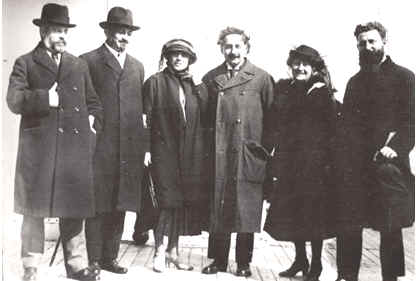
Albert Einstein and his wife Elsa pose with Chaim Weizmann, Chaim's wife Dr.
Vera Weizmann, and other notable Zionist leaders in this 1921 photograph.
Einstein was himself a believer in Zionism and did what he could to help the
cause.
In 1925, together with Lord Balfour, Weizmann inaugurated the Hebrew University
of Jerusalem on Mount Scopus in Jerusalem. He said: “We must create a high
culture, based on Jewish morality, and make it a center of human culture.”
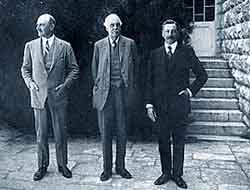
Opening Hebrew University - Weizmann, Balfour, British High Commissioner
Samuels
The First Board of Governors of the University, chaired by Dr. Weizmann includes
Sigmund Freud, Martin Buber, Harry Sacher and Felix M. Warburg
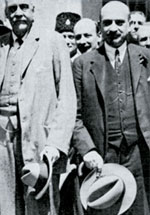
Chaim Weizmann, the leader of the World Zionist Organization, and Lord
Arthur James Balfour, British Foreign Secretary
Placing great emphasis on integrating science and industry, Weizmann promoted
the establishment of advanced enterprises such as the phosphates plant at the
Dead Sea and the hydroelectric power plant at Naharayim. However, despite
renewed growth, the Jewish settlement was afflicted by an economic crisis. To
overcome this crisis Weizmann established the Jewish Agency in 1929.
As a result of the bloody events of 1929, Lord Passfield, British Colonial
Secretary at that time, who viewed the Arab riots as a natural defense against
Jewish aliyah to the Land of Israel, published the White Paper in the name of
the British government. England reneged on the promises made in the Balfour
Declaration, and the Zionist endeavor fell upon trying times.
http://wis-wander.weizmann.ac.il/annual-report/2009/roll-of-honor/honorary-fellows-of-the-weizmann-institute-of-science
Annual Report 2009 » Honorary Fellows of the Weizmann Institute of Science
1969 - Walworth Barbour - [ Bilderberger - U.S. Amb. to Israel from
1961 to 1973 - helped in the Dimona Nuclear Project ]
see: Bilderberger's
in the Kennedy Administration
1963 - John F. Kennedy (Assassinated that year - was this an celebration
award?)
1962 - Lord (Victor) Rothschild [ Spy ]
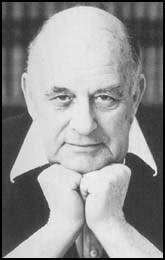
http://mailstar.net/baruch-plan.html
...
Lord Victor Rothschild's involvement with the Peace Movement and Israel's
Nuclear Bomb
Roland Perry, The Fifth Man (Pan Books, London, 1994):
{p. xxi} The Fifth Man was Nathaniel Mayer Victor Rothschild (1910 to 1990),
better known as the third Lord Rothschild. He was the British head of the famous
banking dynasty ...
{p. 221} Months after Israel was formed, Rothschild was involved with Chaim
Weizmann in setting up a special nuclear physics department
{p. 222} in a scientific institute in Rehovoth. The establishment was named
after Weizmann, the nation's first president and himself a distinguished
biochemist.
Its aim even in those heady days of 1948 was to build nuclear weapons for
Israel. It became the nation's best kept secret and the most fervent desire of
the new nation's founders. They never wanted their race to be threatened with
another Holocaust. Atomic weapons would be the ultimate deterrent to future
Hitlers.
Yet when the idea for an Israeli bomb was first conceived, the Soviet Union was
still a year away from its own first trial blast. The Russians were expecting to
detonate, literally after seven years hard labour, when it should have taken
perhaps a century of normal research. They had thrown enormous resources,
thousands of scientists and strong spy networks at the problem. Israel would
have to copy that approach from a standing start. It had limited resources and a
trickle of Jewish technicians. But it did have espionage networks.
The dream of an Israeli bomb was ambitious indeed, but it spurred Rothschild
to keep abreast of all things nuclear so he could pass on data to the Weizmann
Institute, which was planning a nuclear reactor at Dimona in the Negev Desert.
Under a modified guise of concern about the spread and dangers of nuclear
weapons, he was able to keep contact with appropriate scientists around the
world. He began this official and legitimate process at the end of the Second
World War by becoming an expert on fallout, which allowed him to monitor the
Manhattan project. He continued in the 1950s, even on occasions attending
informal conferences on controlling nuclear weapons held by leading British
atomic scientists, who were beginning to comprehend and assess their creation.
The Dane, Niels Bohr, had stimulated consciences post-war by arguing that
nuclear matters belonged to an 'open world', with which the Russians - desperate
to build a nuclear arsenal - agreed wholeheartedly. He had plenty of support
from the scientific community in the US too, but Washington was never going to
support 'the free interchange of ideas' with those dangerous Russians, even if
it had nothing to do with detail about bomb technology.
Bohr's idea was taken up by mathematician and philosopher, Bertrand Russell,
Albert Einstein and the British Atomic Scientists
{p. 223} Association, many of whose members Rothschild knew well. They set up
their first conference at Pugwash, Nova Scotia, in 1955.
Rothschild assiduously kept contact with the key organizers so that his
involvement always seemed natural.
Correspondence with Russell in early 1955 was typical:
Dear Russell, I would like to present the manuscript of your recent broadcast
dealing with the Hydrogen Bomb to Trinity. Can you suggest any way in which I
might acquire it? Yours Sincerely, Rothschild
The so-called Pugwash Conferences emerged as the scientists' response to the
arms race between the US, USSR, China, Britain and France, and the dangers of
fallout.
Scientists from twenty-two nations turned up and problems concerned with peace
and the impact of atomic weapons on humankind were discussed. Rothschild later
floated ideas about how to harness the nuclear genie for 'peaceful purposes' and
not war. He urged the idea of breeder reactors for energy, of which he was a
long-term supporter. What he avoided mentioning was the ease with which breeder
reactors could be adapted to extract weapons-grade nudear fuel.
Everything he learnt ended up at the Weizmann Institute, which was in part
his creation. (His secret support of it with information and finance was
rewarded publicly in 1962 when he was made an Honorary Fellow of the Institute.)
Rothschild was not a technician like Klaus Fuchs. He could not create the
weaponry for Israel. But he could inform its Intelligence leaders (with whom he
was very dose as an important, secret member of Mossad) which scientists might
be helpful, where the available technology might be and how it might be obtained
and funded.
The Israelis sounded out several possibilities. In 1956, Shimon Peres, then
director of the Defence Ministry under Moshe Dayan, had many meetings with
ministers in Guy Mollet's French socialist government as they prepared for the
Suez Canal operation. The French, British and Israelis planned to wrest back the
Canal from President Nasser of Egypt, who had nationalized it.
{p. 224} Peres first gained the trust of the French, then he struck a deal with
Defence Minister, Bourges Maunoury. In return for Israel's help over the Suez
Canal, in which it would make the initial attack on Egyptian defences, the
French promised to consider supplying nuclear plants at Dimona. Israel carried
out its part at Suez, and fortuitously Maunoury replaced Mollet as prime
minister. Maunoury and his foreign minister signed a top-secret agreement with
Peres and Asher Ben-Natan, a Mossad agent at Israel's Defence Ministry.
In it, the French promised to supply a powerful 24-megawatt reactor, the
technical know-how to run it, and some uranium. The secret deal was only known
to about a dozen individuals, induding Rothschild, and with good reason. The
fine print of the document allowed for the inclusion of equipment which would
permit the Israelis to produce weapons-grade nuclear fuel.
In 1957, French engineers began building the two-storey reactor facility at
Dimona on the edge of the Negev Desert, which secretly went down six levels
below ground. The subterranean construction would be the place where nuclear
weapons would be built. With several Mossad officers in attendance, the
engineers also dug an 80-foot deep crater in the sand. In it they buried Machon
2 - a unit which would allow the Israelis to extract weapons grade plutonium,
the fuel for the bomb
http://www.roytov.com/articles/technology.htm
Israel Technologies Transfers
In the weird reality of the Middle East, things seldom are what they look. Time
and again I have read about Israel’s scientific capabilities in articles
plagued with large amounts of irrelevant statistics. In the past, while making
academic research on topics defined as pure science, I found myself taking a
close look at a very impure transfer of Soviet military technology from a
laboratory in Kazakhstan to Israel and discovered an overlooked aspect of
Israel’s scientific apparatus.
Overlooked, but strategic in its importance, Israel technologies transfers’
policy is intrinsically related to the story of the state and to at least two
well known institutions: the Weizmann Institute and the Negev Nuclear Research
Center (e.g. Dimona) .
The Weizmann Institute of Science
Having graduated from the Weizmann Institute of Science and thus knowing it
well, I find time and again misleading information regarding its installations.
The institute was conceived by Dr. Chaim Weizmann, who would later become
the first President of the State of Israel, in 1933.
One year later in 1934, the Daniel Sieff Research Institute was established,
and Dr. Weizmann got a lab, alongside ten other full-time researchers in organic
chemistry and biochemistry;
even in those early days the research performed there was defined as
multidisciplinary. The institute is located on Rehovot’s western entry,
southeast of Tel Aviv. It is probably one of the greenest spots in the
country, though this purity doesn’t extend to its activities.
Throughout WWII and the 1948 War, the institute scientists were deeply
involved in the war efforts, under Dr. Weizmann’s direction.
By the time it was dedicated in 1949, the Weizmann Institute (which includes the
Daniel Sieff Research Institute) had sixty labs in nine fields of research,
including organic, inorganic and bio-chemistry, optics and electronics,
bacteriology and biophysics, polymer and isotope research, and applied
mathematics. Later, the Feinberg Graduate School was established in 1958, and
its first PhD was conferred in 1964.
Secret Protocol
Meanwhile, the State of Israel was created, and in October 1956 signed the
secret Protocol of Sèvres between the governments of Israel, France and the UK.
The protocol was a plot to topple Egyptian President Gamal Abdul Nasser, by
invading and occupying parts of Egypt in response to Nasser's nationalization of
the Suez Canal on July 26 of that year. The planning for and the agreements
contained in the protocol began the Suez War on October 29, 1956.
On October 22, Prime Minister of Israel David Ben-Gurion, Director General of
the Ministry of Defense Shimon Peres and Chief of Staff of the Israel Defense
Forces Moshe Dayan secretly travelled from Israel to Sèvres to meet the French
Minister of Defence Maurice Bourgès-Maunoury, Minister of Foreign Affairs
Christian Pineau and Chief of Staff of the French Armed Forces General Maurice
Challe, and British Foreign Secretary Selwyn Lloyd and his assistant Sir Patrick
Dean.
After two days of negotiations a seven point’s agreement was signed by
Ben-Gurion, Pineau and Dean.
The protocol directly led to the Suez War, which is of no interest to this
article, but also to a close cooperation between the French and Israeli
administrations.
Negev Nuclear Research Center
About thirteen kilometers to
the south-east of the city of Dimona is the Negev Nuclear Research Center,
Israel’s largest nuclear facility. Its construction began in 1958, with French
assistance according to the abovementioned Protocol of Sèvres.
The contents of the facility are far less interesting than the political
results of the secret protocol and how it had shaped Israeli research
capabilities and policies. Let’s skip the nukes and take a close look at
the serious stuff.
Rehovot versus Dimona
The isotope research unit of the Weizmann Institute is where the first
efforts of Israel to develop nuclear technologies took place, disguised as pure
science research.
Then the Negev Nuclear Research Center was created and with it a conflict: How
should the research be performed? Where: Rehovot or Dimona? Who would get the
prestige, resources and salaries? The solution of the problem was unexpected.
Back then, the Director General of the Ministry of Defense, Shimon Peres,
took a decision that shaped the course of the country’s scientific efforts
until now. Instead of developing the technologies from zero – as the Weizmann
Institute proposed - he
decided to appropriate as much as possible from other sources, letting the
scientists just adapt the technologies to the specific needs defined by the
Israeli Administration. He claimed the state was too small and poor to
develop the whole range of technologies needed.
Both, Rehovot and Dimona were relegated to a lesser and much more sinister
status. Scientific spooks.
Since then, the Mossad and
Israeli industries are occupied day and night in getting technologies from
abroad, while the scientists in Dimona and Rehovot are busy adapting
them. Of course, there is also some pure research performed in both,
that’s how the basic training for the more important tasks is achieved.
On Three Techniques
I opened this article mentioning a technology brought from Kazakhstan in the
nineties. Buying technologies is always possible, especially in the open
market created by the collapse of the Soviet Union.
In this case the Israel’s Ministry of Defense funneled funds through an
institute lab. Having been a research student at that lab, I looked fascinated
at the process and then left the institute as fast as possible. That wasn’t my
idea of pure scientific research.
Many people around the world are aware of the State of Israel interests and
tactics, and offer the technologies out of their own will. After I left the
institute, I found myself being requested by Dow Chemical to transfer a
classified military technology developed by them for the American Army to
Israel. In the complex sequence of events that followed their approach, my
Christianity was found out and put to test by the state. Soon afterwards, I
found myself a refugee.
These two types of transfer are described in my book The Cross of
Bethlehem. In the book there is also a close look at another side of this
reality: the Shin-Beth places full-time informants in all academic
institutions. Learning how to avoid them is part of the self-training of any
scientist growing up there.
...
http://www.amazon.com/dp/1439257701?tag=roto-20&camp=14573&creative=327641&linkCode=as1&creativeASIN=1439257701&adid=030TNKGCRT60VJKJ07PY&

The Cross of Bethlehem: The Memoirs of a Refugee [Paperback]
Ro'i Tov (Author), Corinne Lynch (Editor)
Product Description
The Cross of Bethlehem is a memoir of a Christian Israeli military officer caught
in the crosshairs between a country that demands total obedience, even if that
means firing on rock-throwing women and children, and following his conscience.
In a story of faith and courage, tragedy and hope, the author, Ro’i Tov,
shares the heartache of growing up an outsider in the tight-knit kibbutzim along
the Jordan Valley. It is here that his sharp intelligence, instead of buying him
the freedom he so desperately desires, traps him in a company without a moral
compass and a military that challenges his spiritual and moral beliefs. When he
leaves Israel and threatens to tell the world what he has witnessed, he finds
himself on a high-stakes journey that takes him from Thailand to China, from the
US to South America. Only time will tell if justice will prevail and faith will
conquer fear so that God’s message of love and peace can be revealed.
...
Comments:
This book was one that I also could not put down. It was difficult to obtain the
book,.... Mr. Tov is quite an extraordinary man.
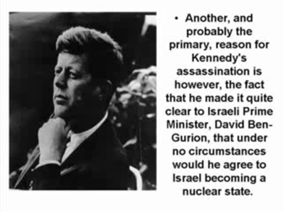
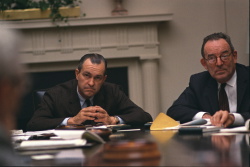
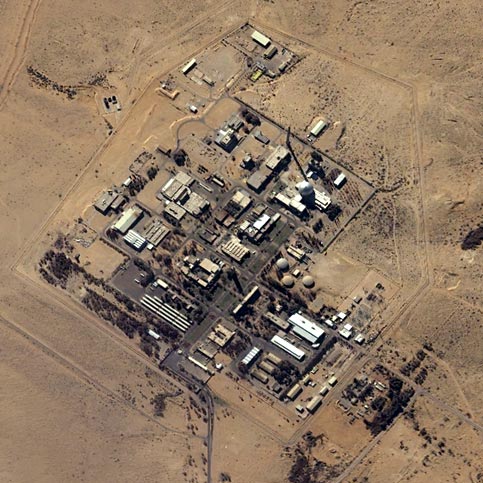 Dimona Nuke Facility
Dimona Nuke Facility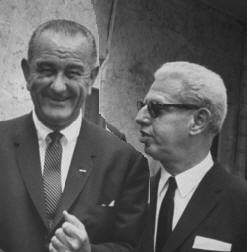
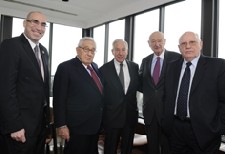
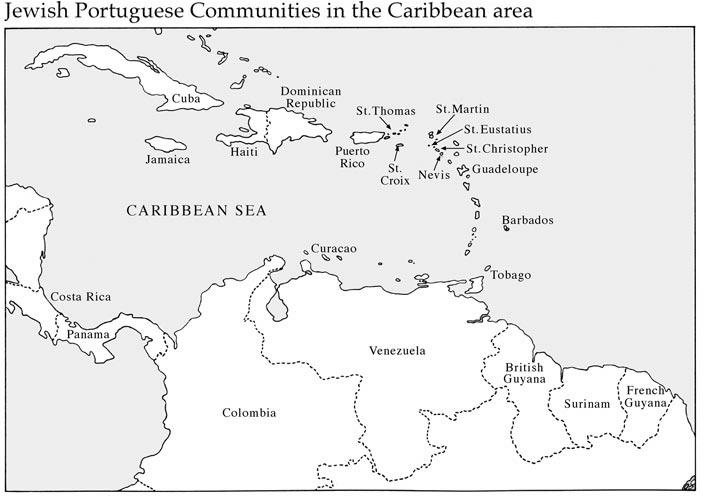
Vernona Soviet spies
I am hoping to show that the tech
tranfer of the bomb to the U.S.S.R also went to Israel , or in other words , the
U.S.S.R
(Stalin) getting the bomb was a cover for Israel getting the bomb thru Cambridge
and Victor Rothschild....
I'll fill this in later , lets start with the Vernona Soviet spies :
http://en.wikipedia.org/wiki/List_of_Americans_in_the_Venona_papers
List of Americans in the Venona papers
...
Solomon Adler**[2]
Lona Cohen**[2]
Morris Cohen**[2], Communist Party USA & Portland Spy Ring member who was
courier for Manhattan Project physicist Theodore Hall.
Harold Glasser,[2] U.S. Treasury Dept. economist, United Nations Relief and
Rehabilitation Administration (UNRRA) spokesman.
Harry Gold,[2] sentenced to 30 years for his role in the Rosenbergs' ring
Theodore Alvin Hall,[2] Manhattan Project physicist who gave plutonium
purification secrets to Soviet intelligence.
Alger Hiss,[2] Lawyer involved in the establishment of the United Nations, both
as a U.S. State Department and UN official.
Donald Hiss**[2]
Frank Oppenheimer**[2]
Julius Robert Oppenheimer[2], Scientific director of the Manhattan
Project and chief advisor to the U.S. Atomic Energy Commission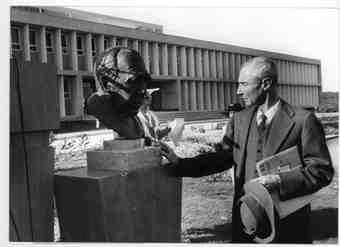
Robert
Oppenheimer in front of the physics building at the Weizmann Institute
Great Atomic Scientists in Israel
“And now gentlemen, do the photographers a favor and try to look
intelligent,” Professor Felix Bloch told his friends Chaim Pekeris, Niels
Bohr, Robert Oppenheimer, Meyer Weisgal and Amos de-Shalit. …The travel to the
celebrations in Rehovot was Oppenheimer’s first trip outside the US borders:
he had been among the leading figures accused by McCarthy’s commission
Allan Rosenberg[2]
Julius Rosenberg,[2] United States Army Signal Corps Laboratories, executed for
role in the Rosenberg ring
Ethel Rosenberg,[2] executed for role in Rosenberg ring based on testimony of
her brother, David Greenglass
http://en.wikipedia.org/wiki/List_of_Soviet_agents_in_the_United_States#Rosenberg_ring
Soviet Agents in the United States
...
Rosenberg ring
Joel Barr, met Julius Rosenberg at City CoIIege of New York, then spied with him
and Al Sarant at Army Signal Corps lab in New Jersey; escaped prosecution by
fleeing to Soviet bloc in 1950. Died 2007.
Max Elitcher, longtime friend of Rosenberg and Sobell from their days at CCNY
before testifying against them
Klaus Fuchs, physicist who supplied information about the British and
American atomic bomb research to the Soviet Union; sentenced to 14 years in the
UK.
Vivian Glassman, fiancée of Joel Barr [4]
Harry Gold, courier sentenced to 30 years
David Greenglass, draftsman at Los Alamos in World War Two, gave atomic bomb
drawings to his sister Ethel Rosenberg, and eventually the Soviets; sentenced to
15 years
Ruth Greenglass, escaped prosecution in exchange for her husband's testimony
against his sister and brother-in-law, the Rosenbergs
Miriam Moskowitz, convicted of obstruction of justice for assisting Brothman.
She was never convicted of being a spy for the Soviet Union.[6]
William Perl, active in Young Communist League at CCNY, then met Al Sarant at
Columbia University; served 5 years for perjury
Morton Sobell, involved with Barr, Perl and Julius Rosenberg at CCNY; sentenced
to 30 years at Alcatraz
Ethel Rosenberg, executed at Sing Sing prison near her native New York City
for conspiracy to commit espionage
Julius Rosenberg, executed at Sing Sing prison near his native New York City for
conspiracy to commit espionage
Al Sarant, stole radar secrets at Army Signal Corps lab in New Jersey, then he
and his mistress abandoned their families for the protection of his Soviet
masters in 1950
Andrew Roth, Office of Naval Intelligence liaison officer with United States
Department of State
Saville Sax college friend of Theodore Hall assisted with Hall's disclosure to
the Soviets of Los Alamos research and development [5] [6]
http://en.wikipedia.org/wiki/Cambridge_Five
The Cambridge Five was a ring of spies, recruited
in part by Russian talent spotter Arnold Deutsch in the United Kingdom, who
passed information to the Soviet Union during World War II and at least into the
early 1950s. Four members of the ring have been identified: Kim Philby
(cryptonym: Stanley), Donald Duart Maclean (cryptonym: Homer), Guy Burgess
(cryptonym: Hicks) and Anthony Blunt (cryptonym: Johnson); jointly they are
known as the Cambridge Four.
Several people have been suspected of being the "fifth man" of the
group; John Cairncross (cryptonym: Liszt) was identified as such by Oleg
Gordievsky, though many others have also been accused of membership in the
Cambridge ring.
...
The term Cambridge Five refers to the conversion of Philby, Burgess, Blunt,
and Maclean to communism during their education at Cambridge University in the
1930s. Debate surrounds the exact timing of their recruitment by Soviet
intelligence; Anthony Blunt claimed that they were not recruited as agents until
they had graduated. Blunt, a Fellow of Trinity College, was several years older
than Burgess, Maclean, and Philby; he acted as a talent-spotter and recruiter.
Both Blunt and Burgess were members of the Apostles, an exclusive and
prestigious society based at Trinity and King's Colleges. John Cairncross, long
suspected of having been the 'Fifth Man', and formally identified as a Soviet
agent in 1990, was also an Apostle.
Other Apostles accused of having spied for the Soviets include Michael
Whitney Straight, Victor Rothschild, research fellow Lewis Daly and Guy
Liddell.
...
In early summer 1951, Burgess and Maclean made international headlines by
disappearing. Their whereabouts were unclear for some time. Strong suspicion
that they had defected to the Soviet Union turned out to be correct, but was not
made public until 1956, when the two appeared at a press conference in Moscow.
...
At the time of Golitsyn's defection, Philby had already been accused in the
press and was living in a country with no extradition agreement with Britain. Select
members of MI5 and MI6 already knew Philby to be a spy from VENONA decryptions.
Golitsyn also provided other information that is widely regarded[by whom?] as
highly improbable, such as the claim that Harold Wilson (then Prime Minister of
the United Kingdom) was a KGB agent.
http://news.bbc.co.uk/2/hi/special_report/1999/09/99/britain_betrayed/444058.stm
http://en.wikipedia.org/wiki/Theodore_Hall
Theodore Alvin Holtzberg was born in Far Rockaway, New York City, but his
family soon moved to Washington Heights in Upper Manhattan.
While his father struggled to find work during the Great Depression, he
changed both his and Theodore's last name to Hall in an effort to avoid
anti-Semitic hiring practices.
Hall attended Public School 173 in Washington Heights during the Depression
and then Harvard University, from which he graduated at the age of 18. [ i.e. a
genius ]
At the age of 19, Hall was recruited to the Manhattan Project, where he was
the youngest scientist at Los Alamos
...
It is not unlikely that he was supplying the Soviets with information
provided to him by someone else, someone much more knowledgeable and much
higher up in the Manhattan Project organization.
While on a vacation in his hometown, New York, he entered the Soviet
consulate and volunteered to pass information on the Manhattan Project to the
Soviet government. (After his death, Hall's wife Joan said that he had begun
to adopt strong feelings, current at the time, against the possibility of a
militarized United States having a nuclear monopoly very early in his time
working at Los Alamos.)
Unbeknownst to Hall, Klaus Fuchs, a Los Alamos colleague, and others still
unidentified were also spying for the USSR; none seem to have known of the
others
...
FBI investigation
Until the release of the Venona decrypts in 1980, nearly all of the espionage
regarding the Los Alamos nuclear weapons program was attributed to Klaus Fuchs.
Hall was questioned by the Federal Bureau of Investigation in March 1951 but,
mysteriously, wasn't charged. Alan H. Belmont, the number-three man in the FBI,
decided that the Venona project would be inadmissible as hearsay evidence and
not worth compromising the program
...
Hall left Los Alamos for the University of Chicago, where he switched to
biology. There he pioneered important techniques in X-ray microanalysis. He
went to work at Cambridge University in England in 1962. Hall later became
active in obtaining signatures for the Stockholm Peace Pledge.
...
In a written statement published in 1997, Hall came close to admitting that
the accusations against him were true, although obliquely, saying that in
the immediate postwar years, he felt strongly that "an American
monopoly" on nuclear weapons "was dangerous and should be
avoided":
To help prevent that monopoly I contemplated a brief encounter with a Soviet
agent, just to inform them of the existence of the A-bomb project. I anticipated
a very limited contact. With any luck, it might easily have turned out that way,
but it was not to be.
He repeated this near-confession in an interview for a Cold War documentary on
the Cable News Network in 1998, saying,
I decided to give atomic secrets to the Russians because it seemed to me that
it was important that there should be no monopoly, which could turn one nation
into a menace and turn it loose on the world as ... as Nazi Germany
developed. There seemed to be only one answer to what one should do. The right
thing to do was to act to break the American monopoly.
Death
On November 1, 1999, Theodore Hall died in Cambridge, England. He had
suffered from Parkinson's disease, although he died of renal cancer at the age
of 74
http://www.guardian.co.uk/news/1999/nov/16/guardianobituaries.haroldjackson
Theodore Hall - US scientist-spy who escaped prosecution and spent 30 years
in biological research at Cambridge
Theodore Hall, who has died at the age of 74, was the American atomic scientist
discovered by the United States authorities to have been a wartime Soviet spy -
but who was never prosecuted.
The information he gave Moscow was at least as sensitive as that which sent
Julius and Ethel Rosenberg to the electric chair. But the Americans decided not
to charge Hall because of the security and legal difficulties of disclosing that
they had penetrated some of the Soviet Union's most secure diplomatic codes.
Subsequently, and with the tacit consent of the British security authorities,
Hall spent more than 30 productive years as a respected researcher at Cambridge
University until he retired in 1984 aged 59.
His espionage was uncovered through the highly-secret Venona project,
Washington's long and painstaking effort to decrypt 35,000 pages of Soviet
diplomatic traffic intercepted between 1942 and 1946. In the end only about
3,000 of the original texts were ever recovered, mostly long after their
transmission.
...
The first clear reference to Hall had come in a message transmitted on November
12 1944 by the KGB station in New York but not eventually deciphered until April
1961. "BEK visited Teodor KhOLL, 19 years old, the son of a furrier. He is
a graduate of Harvard university. As a talented physicist, he was taken on for
government work... At the present time H is in charge of a group at CAMP-2. He
handed over to Bek a report about the camp and named the key personnel employed
on ENORMOUS."
"Bek" was Sergei Kurnakov, a Soviet journalist working in New York;
"Camp-2" was the US scientific research centre at Los Alamos, and
"Enormous" was Moscow's cryptonym for the Manhattan Project, America's
top-secret programme to develop the atomic bomb.
This was the only message that ever mentioned Hall, and his fellow spy
Saville Sax, by name. All other references used their code names - MLAD
(Young) for Hall and STAR (Old) for Sax - which the Venona team had unravelled
much earlier but could not identify. The message had been sent shortly after
Hall had started work at Los Alamos.
From an early age he had displayed an astonishing talent for mathematics and
physics. In 1940, aged 14, he had achieved some of the highest marks ever
recorded in the entrance examination at Columbia University, but was then told
he was too young to enrol. He went instead to Queen's College, New York,
transferring two years later to Harvard, where he was allowed to skip the first
year of his course.
There he immersed himself in relativity and quantum mechanics and was
well-enough regarded to be awarded a special scholarship. As the Nazis went
from one military success to another in Europe, he also became increasingly
involved in leftwing politics, along with his room-mate Sax.
Hall had become a star pupil of Professor John Van Vleck, one of America's
leading experts in quantum theory. The professor had been secretly recruited by
the leading US scientist Robert Oppenheimer to help design the atomic bomb - and
he, in turn, recommended Hall for work at Los Alamos.
Hall's government interviewer had said no more than that the proposed job was
very secret and important to the war effort. The first idea of passing
information to the Russians apparently emerged when Hall mentioned the project
to Sax.
In June 1944, after Hall had been working at Los Alamos for some months, he
was awarded a first-class degree in absentia by Harvard. This brought him
promotion, at the age of 18, to head a team involved in designing the implosion
trigger for one of the experimental bombs - the one which was eventually
detonated successfully at the Trinity site in New Mexico on July 16 1945.
After preliminary tests of the mechanism's practicality, Hall took annual
leave to celebrate his 19th birthday with his parents in New York. But - as
he explained to two American journalists, Joseph Albright and Marcia Kunstel, 50
years later - he had by then decided to tell the Russians about his work.
...
Bombshell

The Boy Who Gave Away The Bomb
By Joseph Albright and Marcia Kunstel; Joseph Albright and Marcia
The New York Times Company The New York Times September 14, 1997, Sunday, Late
Edition
Section 6; Page 70; Column 1; Magazine Desk HEADLINE:
http://extras.denverpost.com/books/book70.htm
BOMBSHELL
The Secret Story Of America's Unknown Atomic Spy Conspiracy
By Joseph Albright and Marcia Kunstel,
Times Books, $25
Nov. 9 - For five decades it was Julius and Ethel Rosenberg and the physicist
Klaus Fuchs. They were the villains, along with Ethel's brother David
Greenglass and a few other dedicated socialists who gave away U.S. atomic
secrets, who aided and abetted Joe Stalin, murderer of 25 million and enemy of
humankind.
...
But there was at least one other spy within the Manhattan Project who aided the
Soviets during World War II. He was a brilliant teenage scientist working on the
A-bomb at Los Alamos. He gave the Soviets far more than the Rosenbergs, and did
it earlier than Fuchs.
The FBI was handed his name by Army officials who had broken the code on Soviet
diplomatic messages. But the FBI couldn't build a case and he went on to live a
long and comfortable life. Now, he's in his 70s, resides in Britain, and remains
steadfast in the certitude that he did the right thing.
His name is Theodore Hall. "Bombshell'' is his story, well told with
insight and balance by former Cox Newspapers correspondents Joseph Albright and
Marcia Kunstel. Albright and Kunstel spent three years sifting through
declassified Russian and U.S. documents. They interviewed hundreds of people who
might have had anything to do with Ted Hall from his birth to the present. They
cross-checked sources. They compiled, verified and prioritized information. They
tell a complex story with no hyperbole, make no normative assessment and give
new meaning to the word balance.
http://www.amazon.com/exec/obidos/ISBN=0316821152/002-6605161-0167653
Special Tasks [Paperback]
Anatoli Sudoplatov (Author), Pavel Sudoplatov
Pavel Sudoplatov (Author)
Leona P. Schecter (Author), Jerrold L. Schecter (Author)
Sudoplatov, a former intelligence official during the Stalin era, presents an
updated version of his controversial memoir.
Special Tasks : The Memoirs of an Unwanted Witness -A Soviet Spymaster by Pavel
Sudoplatov
The atomic bomb secrets were betrayed not by the Rosenbergs but by none other
than Robert Oppenheimer and Enrico Fermi
Bulletin of the Atomic Scientists Jan 1998
"the Youngest Spy"
http://en.wikipedia.org/wiki/Sergey_Nikolaevich_Kurnakov
Sergey Nikolaevich Kurnakov or Sergei N. Kournakoff (Russian:
Сергей
Курнаков), is a former tsarist
cavalry officer who had immigrated to the U.S. and later became an ardent
ideological Communist.
...
Kurnakov served as a courier to various Soviet intelligence sources, and acted
as both a talent-spotter and a vetter of potential recruits. Kurnakov was a
highly active liaison agent. He was accused of Communism in Time in January 1944
after teaching at a Russian course at Cornell University in the summer of 1943.
He was posthumously named as a communist agent in senate hearings in 1953.
His activities as an agent were revealed when the Venona decrypts were made
public in 1995. He was the contact for Flora Wovschin's father, Enos Wicher.
Kurnakov also took over Mary Jane Keeney who worked for the Board of Economic
Warfare and later the United Nations from Soviet Military Intelligence (GRU).
Her husband Philip Keeney, who worked for what became the OSS also was taken
over by Kurnakov and the KGB.
Kurnakov was the contact between Saville Sax and Theodore Hall.[citation
needed] Kurnakov reported Hall to have "an exceptionally keen mind and a
broad outlook," and to be "politically developed." At their first
meeting Hall gave Kurnakov a report he had prepared on the Los Alamos facility,
the progress of the research, and the roles of the chief scientists working on
the atomic bomb. Kurnakov immediately reported to KGB Officers Anatoly
Yatskov and Stepan Apresyan on his meeting with Hall.
His son, Nick Kurnakov, served in Europe with the United States Army during
World War II until he defected to the Red Army and was given an officer's rank.
He joined Radio Moscow after the war.[1]
http://en.wikipedia.org/wiki/Saville_Sax
Saville Sax (July 26, 1924 – September 25, 1980)
was the Harvard University roommate of Theodore Hall who recruited Hall for
the Soviets and acted as a courier to move the atomic secrets from Los Alamos to
the Soviets
...
Saville was introduced to Soviet agents by his mother, Bluma, who worked for
a Communist front organization called Russian War Relief.[5] Sax went by the
cover name "Oldster," and periodically traveled to New Mexico to
collect information from Hall.
Just in case people say ther is no "World Zionist Organization"
:
http://www.en.wzo.org.il/home/P100.jsp
Mission Statement
The World Zionist Organization is committed to promoting the Zionist idea and
the Zionist enterprise as vital and positive elements of contemporary Jewish
life, in accordance with the principles articulated in the Jerusalem Program.
This manifesto is dedicated to instilling the centrality of Israel and Jerusalem
its capital deep within Jewish consciousness, encouraging the return to Zion,
fashioning an exemplary society in the Jewish state, expanding Zionist education
including Hebrew language instruction, settling the land, and combating
anti-Semitism.
The WZO strives to enhance the impact of Zionist ideology and activity in Jewish
communities around the world, including Israel, both by working through the
Zionist Federations and their constituent bodies, and by influencing the agenda
of the organized Jewish community, particularly through its involvement with the
Jewish Agency for Israel.
About the World Zionist Organization
The World Zionist Organization was founded at the initiative of Theodore
Herzl at the First Zionist Congress which took place in august 1897 in Basel,
Switzerland.
When it was founded, the goals of the Zionist movement were stated in a
resolution that came of that Congress and came to be known as the “Basel
Program.”
Zionism aims at establishing for the Jewish people a legally assured
home in Eretz Yisrael. To achieve this purpose, the following means shall be
employed:
Promoting the settlement of Jewish farmers, artisans, and tradesmen in
Palestine.
Organizing and uniting the whole of Jewry through effective local and
international means in accordance with the laws of each country.
Strengthening of the Jewish national sentiment and national consciousness.
Preparatory steps toward obtaining the consent of governments, where
necessary, in order to achieve the goals of Zionism.
The WZO consists of the following bodies: The World Zionist Unions,
international Zionist federations; and international organizations that define
themselves as Zionist, such as WIZO, Hadassah, Bnai-Brith, Maccabi, the
International Sephardic Federation, the three streams of world Judaism
(Orthodox, Conservative, Reform), delegation from the CIS – Commonwealth of
Independent States (former Soviet Union), the World Union of Jewish Students (WUJS),
and more.
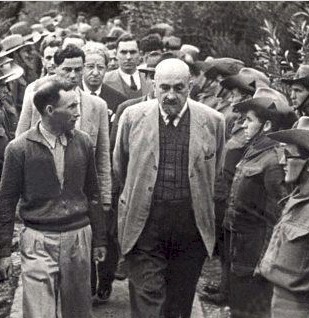
Another dead scientist :
http://research.microsoft.com/en-us/groups/theory/
(Microsoft Research) Theory Group
We work on fundamental problems in mathematics and theoretical computer science,
interact extensively with the academic community and collaborate with other
researchers at MSR on challenging applied problems. Among our areas of expertise
are probability theory, combinatorics, statistical physics, metric geometry,
fractals, algorithms and optimization.
http://www-history.mcs.st-and.ac.uk/Biographies/Schramm.html
Oded Schramm
Born: 10 Dec 1961 in Jerusalem, Israel
Died: 1 Sept 2008 in Guye Peak, Washington State, USA
Following the award of his doctorate, Schramm worked for two years as a
postdoctoral fellow at the University of California, San Diego.
In 1992 he returned to Israel when appointed to the Weizmann
Institute in Rehovot, Israel.
This Institute was founded by Chaim Weizmann, first president of Israel, in
1934. It was renamed the Weizmann Institute of Science in 1944.
Schramm worked at the Institute for seven years until,
in 1999, he returned to the United States to take up a position in the Theory
Group at Microsoft Research in Redmond, Washington
The list of awards and prizes he received shows the remarkable quality of his
work. Among the first prizes he received were the Anna and Lajos Erdős
Prize in Mathematics in 1996, and the Salem Prize in 2001 (jointly with
Stanislav Smirnov):-
he received the 2002 Clay Research Award
He then received the Loève Prize in 2003
Next he received the Henri Poincaré Prize in 2003
He was awarded the SIAM George Pólya Prize in 2006
he received next the Ostrowski Prize in 2007.
In 2008 he was elected as a foreign member of the Royal Swedish Academy of
Sciences.
...
Schramm, who was an avid climber, died in a mountaineering accident at Guye
Peak, near Snoqualmie Pass, in Washington State. He had gone climbing on his
own and when he failed to return as planned on 1 September 2008, his wife
reported him missing. His body was discovered the next morning.
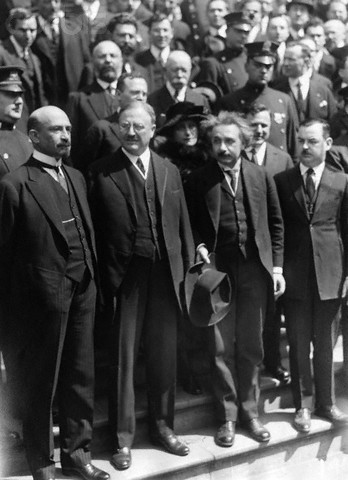
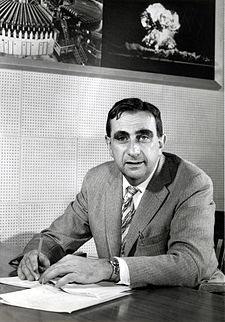
 Israel
and the Bomb [Paperback] Avner Cohen (Author)
Israel
and the Bomb [Paperback] Avner Cohen (Author) 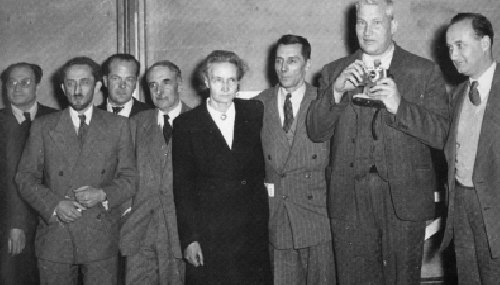
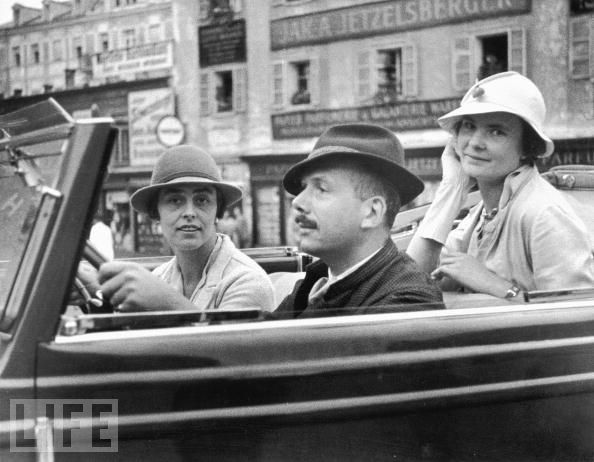
http://www.au.af.mil/au/awc/awcgate/cpc-pubs/farr.htm
...
Mordechai Vanunu provided the best look at the Israeli nuclear arsenal in 1985
complete with photographs.93 A technician from Dimona who lost his job,
Vanunu secretly took photographs, immigrated to Australia and published some of
his material in the London Sunday Times.
He was subsequently kidnapped by Israeli agents, tried and imprisoned.
His data shows a sophisticated nuclear program, over 200 bombs, with boosted
devices, neutron bombs, F-16 deliverable warheads, and Jericho warheads.94
The boosted weapons shown in the Vanunu photographs show a sophistication
that inferred the requirement for testing.95 He revealed for the first
time the underground plutonium separation facility where Israel was producing 40
kilograms annually, several times more than previous estimates.
Photographs showed sophisticated designs which scientific experts say enabled
the Israelis to build bombs with as little as 4 kilograms of plutonium. These
facts have increased the estimates of total Israeli nuclear stockpiles (see
Appendix A).96
In the words of one American, “[the Israelis] can do anything we or the
Soviets can do.”97
Vanunu not only made the technical details of the Israeli program and stockpile
public but in his wake, Israeli began veiled official acknowledgement of the
potent Israeli nuclear deterrent. They began bringing the bomb up the
basement stairs if not out of the basement.
http://wondersofpakistan.wordpress.com/2010/06/08/the-infamous-famous-mordechai-vanunu/
The Infamous [famous] Mordechai Vanunu
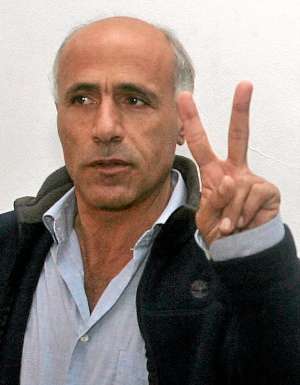
...
VANUNU: Well, the most important point is that it was the same
situation that we have right now, namely that these people continue to lie and
to cheat the world as well as their own citizens by denying the truth, by
declaring that they do not have atomic weapons while at the same time I was
working there helping to produce them.
At that time there were more than 200 atomic weapons, in 1986, and it
was at that time that they started to produce the most horrible of all weapons,
the hydrogen bomb…all of this in secret, in lying and in cheating the
world and all of its citizens. So I said to myself `It is impossible to keep
these secrets. I must report about them and to try and stop it.’
http://www.rightlivelihood.org/vanunu.html
Mordechai Vanunu (Israel)
Mordechai Vanunu was born in Morocco and moved with his family to Israel in
1963. He did three years' military service from 1971 to '74, when he was
given an 'honourable discharge' having served as a First Sergeant in a unit of
sappers. He became a technician at the Dimona nuclear plant in 1976 and
underwent special training. In October 1979 he began studies at Ben Gurion
University, Be'er-Sheva, in philosophy and geography, graduating in 1984/5.
At university Vanunu became increasingly politically active, calling for equal
rights for Palestinians in Israel and for the inclusion of Palestinians in
negotiations for the establishment of an independent Palestinian state. Becoming
more and more disillusioned with Israel's military posture, he opposed the
country's 1982 invasion of Lebanon.
In November 1985 he was made redundant in a mass lay-off of workers at Dimona.
Ten months later he talked to a London newspaper, the Sunday Times, about the
Dimona plant,
revealing that Israel's nuclear capability was far greater than suspected.
He told the newspaper that Israel
probably had a stockpile of 100-200 nuclear weapons,
was able to make thermonuclear devices more powerful than atomic bombs and had
collaborated routinely with South Africa on nuclear matters.
Soon after the resulting article appeared, Vanunu went missing.
...
Vanunu's revelations were exhaustively checked by the Sunday Times before
publication and they have not been seriously challenged.
http://www.voltairenet.org/Mordechai-Vanunu-Having-the-atomic
Mordechai Vanunu: “Having the atomic bomb is what has allowed Israel to
fearlessly carry out its apartheid policy”
[Voltaire Network]
http://en.wikipedia.org/wiki/Mordechai_Vanunu
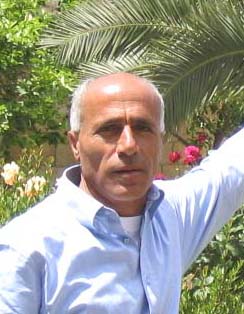
Mordechai Vanunu (Hebrew: מרדכי
ואנונו); (born 14 October 1954) is
a former Israeli nuclear technician who, citing his opposition to weapons of
mass destruction, revealed details of Israel's nuclear weapons program to the
British press in 1986.[2][3]
He was subsequently lured to Italy by a female Mossad agent, where he was
drugged and kidnapped by Israeli intelligence agents.[2] He was transported to
Israel and ultimately convicted in a trial that was held behind closed doors.[2]
Vanunu spent 18 years in prison, including more than 11 in solitary
confinement. Released from prison in 2004, he became subject to a broad array of
restrictions on his speech and movement.
Since then he has been arrested several times for violations of those
restrictions, including giving various interviews to foreign journalists and
attempting to leave Israel.
He says he suffered "cruel and barbaric treatment" at the hands of
Israeli authorities while imprisoned, and suggests that his treatment would have
been different if he were Jewish (Vanunu is a Christian convert from Judaism).[4]
In 2007, Vanunu was sentenced to six months in prison for violating terms of
his parole.
The sentence was considered unusual even by the prosecution who expected a
suspended sentence. In response, Amnesty International issued a press release on
2 July 2007, stating that "The organisation considers Mordechai Vanunu to
be a prisoner of conscience and calls for his immediate and unconditional
release."[5] In May 2010, Vanunu was arrested and sentenced to three months
in jail on suspicion that he met foreigners in violation of conditions of his
2004 release from jail.
Vanunu has been characterized internationally as a whistleblower[6][7] and by
Israel as a traitor.[8][9][10][11]
Daniel Ellsberg has referred to him as "the preeminent hero of the
nuclear era".[ 12]
In 2010, the British artist Richard Hamilton completed a painting based on the
famous press photograph of Vanunu in transit after his kidnapping, with the
information concerning his capture in Rome scrawled on his hand for the press
outside.
http://www.telegraph.co.uk/news/worldnews/middleeast/israel/7757977/Israeli-nuclear-whistle-blower-Mordechai-Vanunu-back-in-prison.html
Israeli nuclear whistle-blower Mordechai Vanunu back in prison
Israeli nuclear whistle-blower Mordechai Vanunu has started a three-month jail
sentence for breaking the terms of his release and meeting a foreigner.
7:00AM BST 24 May 2010
...
"Shame on you, Israel, and the stupid Shin Bet and Mossad spies who are
returning me to jail after 24 years in which I have spoken only the truth,"
Vanunu shouted in court before being led away, referring to Israel's
internal security arm and its international spy service.
"Freedom is a basic part of human rights. I am not an animal. You
punished me in the past, but I cannot accept a violation of my freedom of
expression."
The 55-year-old was arrested in December at a Jerusalem hotel while talking
to a Norwegian woman
...
Since his release in 2004, he has been detained several times for violating the
terms of his release that ban him from travel or contact with foreigners.
The Jewish state has refused to sign the nuclear Non-Proliferation Treaty or
to allow international surveillance of Dimona in the southern Negev desert.
Vanunu became an international cause celebre during his time in prison. At
home, he is still widely reviled for converting to Christianity shortly
before he was kidnapped in Italy. He was jailed after being covertly shipped
back to Israel.
http://www.fas.org/nuke/guide/israel/nuke/
...
History
Israel began actively investigating the nuclear option from its earliest
days. In 1949, HEMED GIMMEL a special unit of the IDF's Science Corps, began a
two-year geological survey of the Negev desert with an eye toward the discovery
of uranium reserves.
Although no significant sources of uranium were found, recoverable amounts were
located in phosphate deposits.
...
The program took another step forward with the creation of the Israel Atomic
Energy Commission (IAEC) in 1952.
Its chairman, Ernst David Bergmann, had long advocated an Israeli bomb as the
best way to ensure "that we shall never again be led as lambs to the
slaughter."
Bergmann was also head of the Ministry of Defense's Research and
Infrastructure Division (known by its Hebrew acronym, EMET), which had taken
over the HEMED research centers (HEMED GIMMEL among them, now renamed Machon 4)
as part of a reorganization. Under Bergmann, the line between the IAEC and EMET
blurred to the point that Machon 4 functioned essentially as the chief
laboratory for the IAEC.
By 1953, Machon 4 had not only perfected a process for extracting the uranium
found in the Negev, but had also developed a new method of producing heavy water,
providing Israel with an indigenous capability to produce some of the most
important nuclear materials.
For reactor design and construction, Israel sought the assistance of France.
Nuclear cooperation between the two nations dates back as far as early 1950's,
when construction began on France's 40MWt heavy water reactor and a chemical
reprocessing plant at Marcoule. France was a natural partner for Israel and
both governments saw an independent nuclear option as a means by which they
could maintain a degree of autonomy in the bipolar environment of the cold war.
In the fall of 1956, France agreed to provide Israel with an 18 MWt research
reactor. However, the onset of the Suez Crisis a few weeks later changed the
situation dramatically. Following Egypt's closure of the Suez Canal in July,
France and Britain had agreed with Israel that the latter should provoke a war
with Egypt to provide the European nations with the pretext to send in their
troops as peacekeepers to occupy and reopen the canal zone. In the wake of the
Suez Crisis, the Soviet Union made a thinly veiled threat against the three
nations. T
his episode not only enhanced the Israeli view that an independent nuclear
capability was needed to prevent reliance on potentially unreliable allies, but
also led to a sense of debt among French leaders that they had failed to fulfill
commitments made to a partner.
French premier Guy Mollet is even quoted as saying privately that France
"owed" the bomb to Israel.
On 3 October 1957, France and Israel signed a revised agreement calling for
France to build a 24 MWt reactor (although the cooling systems and waste
facilities were designed to handle three times that power) and, in protocols
that were not committed to paper, a chemical reprocessing plant. This complex
was constructed in secret, and outside the IAEA inspection regime, by French and
Israeli technicians at Dimona, in the Negev desert under the leadership of Col.
Manes Pratt of the IDF Ordinance Corps.
Both the scale of the project and the secrecy involved made the construction of
Dimona a massive undertaking. A new intelligence agency, the Office of Science
Liasons,(LEKEM) was created to provide security and intelligence for the
project. At the height construction, some 1,500 Israelis some French workers
were employed building Dimona. To maintain secrecy, French customs officials
were told that the largest of the reactor components, such as the reactor tank,
were part of a desalinization plant bound for Latin America. In addition, after
buying heavy water from Norway on the condition that it not be transferred to a
third country, the French Air Force secretly flew as much as four tons of the
substance to Israel.
Trouble arose in May 1960, when France began to pressure Israel to make the
project public and to submit to international inspections of the site,
threatening to withhold the reactor fuel unless they did. President de Gaulle
was concerned that the inevitable scandal following any revelations about French
assistance with the project, especially the chemical reprocessing plant, would
have negative repercussions for France's international position, already on
shaky ground because of its war in Algeria.
At a subsequent meeting with Ben-Gurion, de Gaulle offered to sell Israel
fighter aircraft in exchange for stopping work on the reprocessing plant, and
came away from the meeting convinced that the matter was closed. It was not.
Over the next few months, Israel worked out a compromise. France would supply
the uranium and components already placed on order and would not insist on
international inspections. In return, Israel would assure France that they had
no intention of making atomic weapons, would not reprocess any plutonium, and
would reveal the existence of the reactor, which would be completed without
French assistance. In reality, not much changed - French contractors finished
work on the reactor and reprocessing plant, uranium fuel was delivered and the
reactor went critical in 1964.
The United States first became aware of Dimona's existence after U-2 overflights
in 1958 captured the facility's construction, but it was not identified as a
nuclear site until two years later. The complex was variously explained as a
textile plant, an agricultural station, and a metallurgical research facility,
until David Ben-Gurion stated in December 1960 that Dimona complex was a nuclear
research center built for "peaceful purposes."
There followed two decades in which the United States, through a combination of
benign neglect, erroneous analysis, and successful Israeli deception, failed to
discern first the details of Israel's nuclear program. As early as 8 December
1960, the CIA issued a report outlining Dimona's implications for nuclear
proliferation, and the CIA station in Tel Aviv had determined by the mid-1960s
that the Israeli nuclear weapons program was an established and irreversible
fact.
United States inspectors visited Dimona seven times during the 1960s, but they
were unable to obtain an accurate picture of the activities carried out there,
largely due to tight Israeli control over the timing and agenda of the visits.
The Israelis went so far as to install false control room panels and to brick
over elevators and hallways that accessed certain areas of the facility. The
inspectors were able to report that there was no clear scientific research or
civilian nuclear power program justifying such a large reactor - circumstantial
evidence of the Israeli bomb program - but found no evidence of "weapons
related activities" such as the existence of a plutonium reprocessing
plant.
Although the United States government did not encourage or approve of the
Israeli nuclear program, it also did nothing to stop it. Walworth Barbour, US
ambassador to Israel from 1961-73, the bomb program's crucial years, primarily
saw his job as being to insulate the President from facts which might compel him
to act on the nuclear issue, alledgedly saying at one point that "The
President did not send me there to give him problems. He does not want to be
told any bad news." After the 1967 war, Barbour even put a stop to military
attach鳧 intelligence collection efforts around Dimona. Even when Barbour
did authorize forwarding information, as he did in 1966 when embassy staff
learned that Israel was beginning to put nuclear warheads in missiles, the
message seemed to disappear into the bureaucracy and was never acted upon.
...
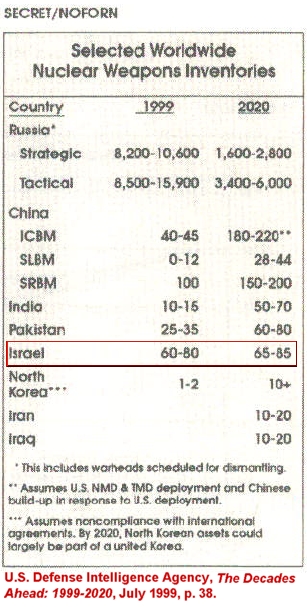
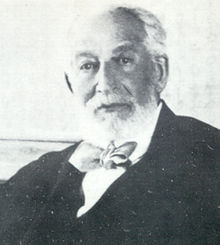 Baron Edmond James de Rothschild
Baron Edmond James de Rothschild
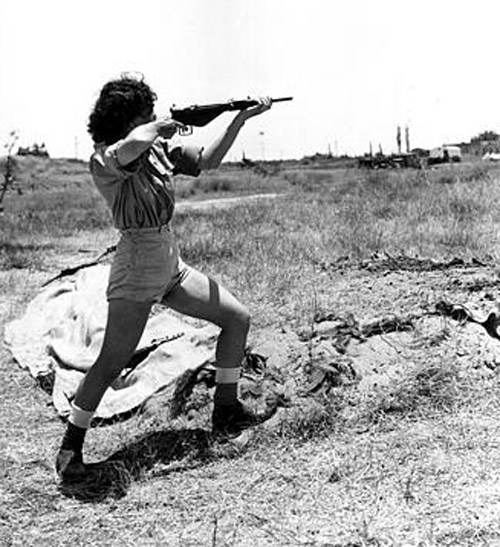
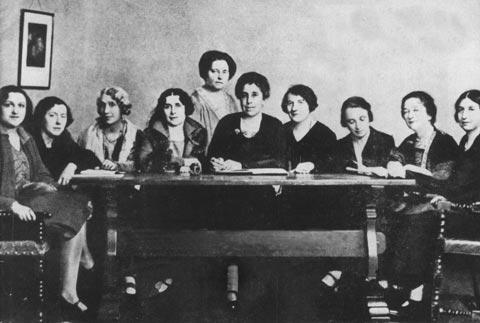
http://www.nysun.com/arts/arabian-knights/71551/

A meeting of Bedouin and Circassian leaders (T.E. Lawrence, third from
right).
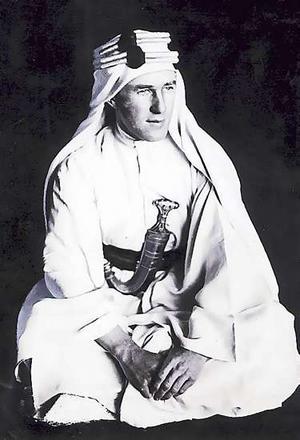
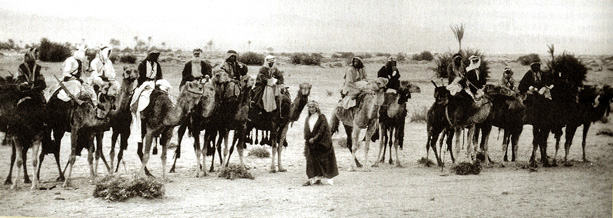
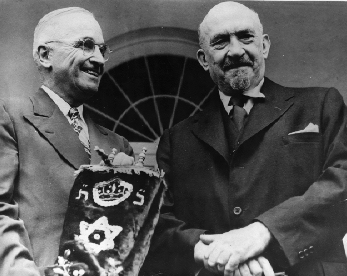
What do you see as their final objective?
read: http://mailstar.net/baruch-plan.html
The proposal was put in the Bulletin of the Atomic Scientists over several
months in 1946.
In his book Has Man a Future?, Bertrand Russell - an advocate of World
Government - describes how it developed, first as a proposal assembled by David
Lilienthal, then in a form developed by Bernard Baruch (p. 25 & p.
97).
This "Baruch Plan" was canvassed in the issues of 1946 and put
to Stalin. By the end of that year, Stalin had rejected it, on the grounds that
it required submission to Washington, and the Cold War had begun.
The One World conspiracy has
three factions: Tory (Imperial), International Socialist, and Zionist:
[ Now I would say this is in line with the
"Winners" of WWII - U.S.A. - U.K. - U.S.S.R and the Jewish
scientists "WON" the war with the Atom/Fusion bomb(s). The
USA/UK - Pilgrim Society - Anglo-American Empire are the
"Tories" - These factions rule the world. There will probably never be
in our lifetimes a "Global Government
But there already is a system in place of "Global Governance".
The people who truly rule Globally do not want anyone to be able to point there
fingers at them and say "You are the ones that are responsible for all
this! You must be removed!
So we are already seeing the
"final solution" from our "masters", they and their helpers
get richer and stronger while the average Joe gets weaker and poorer. The
neo-feudal global system is upon us. Population reduction is already upon us,
the older people just haven't died yet. If things haven't changed by 2040-50
there will be a population implosion.
Global starvation? Global epedemic? WW 3/4 ? ]
see : http://mailstar.net/british-conspiracy.html
http://www.britishisrael.co.uk/
http://en.wikipedia.org/wiki/British-Israel-World_Federation
The British-Israel-World Federation is an organization that was founded in
London July 3 1919, although its roots can be traced back to the 19th century.
At one time this organization enjoyed the patronage of members of the British
Establishment including HRH Princess Alice of Athlone, the Duke of Buccleuch
Kt., the Rt. Hon. the Earl of Dysart, the Rt. Hon. the Countess-Dowager of
Radnor, the Rt. Hon. Lord Gisborough, and the Rt. Hon. W F Massey (Prime
Minister of New Zealand).
...
British Israelism (also called Anglo-Israelism) is the belief that people of
Western European descent, particularly those in Great Britain, are the direct
lineal descendants of the Ten Lost Tribes of Israel. The concept often includes
the belief that the British Royal Family is directly descended from the line of
King David.[1][2]
Jordan Maxwell - The British-Israel World Federation & the Dawn of a New
Day
http://www.jordanmaxwell.com/articles/british-israel/index.html
http://www.youtube.com/watch?v=dCG7QAX8iiM
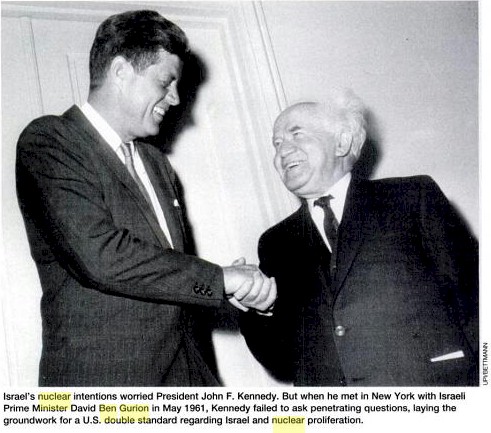
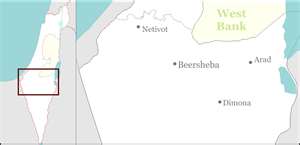
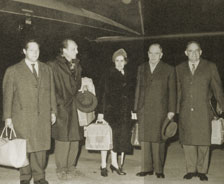
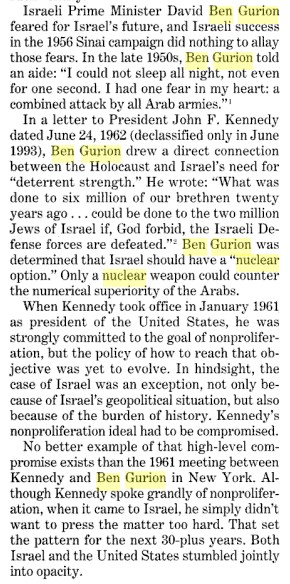


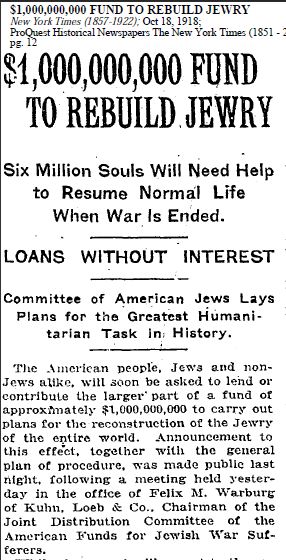 Why
6 million? - JDC Through the Year
Why
6 million? - JDC Through the YearThis is just unreal - Eisenhower and Strauss in 1967 during the Vietnam
war :
http://lawlibrary.unm.edu/nrj/32/4/09_wolf_impact.pdf
AARON WOLF and JOHN ROSS*
The Impact of Scarce Water Resources on the Arab-Israeli Conflict
...
C. 1967-1982
In the wake of the 1967 war, former President Eisenhower, who 10 years
earlier had sent Eric Johnston to the Mideast to negotiate a regional water
plan, made public a new cooperation scheme he and former Atomic Energy
Commissioner Lewis Strauss had formulated which they called simply, "A
Proposal for Our Time."
Their plan, based this time on new technology, called for three nuclear
desalination plants, two on the Mediterranean coast and one at the Gulf of Aqaba,
producing a combined output of about 1400 MCM of freshwater a year-roughly
the usable flow of the entire Jordan River-as well as "an enormous
amount" of electric power.65
As Eisenhower and Strauss saw it, the availability of these new sources of
energy and water would make possible an entire 'agro-industrial complex,' making
an additional 4500 km2 of barren land arable, and
providing work and agriculture to help settle more than a million Arab
refugees."6
The project, which would cost about a billion (1967) dollars, would be funded by
an international corporation set up for the purpose and supervised by the
International Atomic Energy Agency. Moreover, Eisenhower predicted that the
"collaboration of Arab and Jew in a practical and profitable enterprise of
this magnitude might well be the first, long step toward a permanent
peace." 67
In the summer of 1967, Eisenhower communicated his project to President
Lyndon Johnson. On July 28, the State Department announced the appointment of an
interim Director of Water for Peace.68 In the fall,
Senator Howard Baker from Tennessee introduced a senate resolution endorsing the
plan as a method of "easingpolitical tensions in the Middle East through
international cooperation."69 The resolution was approved unanimously by
the Foreign Relations Committee and adopted without dissent by the Senate.
The project was studied in detail over the course of the next five years by a
technical group centered at the Oak Ridge National Laboratories.
Despite the overwhelming political and technical obstacles, the plan finally
faltered on the basis of its economic evaluation. [ RIGHT! ]
http://www.american-buddha.com/lit.samsonoptionhersh.7.htm
...
In 1933, Strauss had been asked by the American Jewish Committee to attend an
international conference in London on the Jewish plight. There he met Dr. Chaim
Weizmann and listened as the conferees agreed that an "astronomical
sum" of money from the United States must be raised to help resettle what
could be millions of Jews. Strauss, then fervently opposed to a Jewish state in
Palestine, was the only delegate to raise his voice in dissent during the
conference, a position he came to· regret. Six years later, Strauss would
spend much time and effort in an unsuccessful attempt to convince the British
government to donate a large chunk of colonial Africa for resettlement by
European refugees, Jews and non-Jews alike. With the Nazi blitzkrieg only
months away, money was no longer an object: Strauss and his American colleagues,
who included Bernard Baruch, the financier, were agreed that as much as $300
million could be raised. [1] It was too late; Strauss's strong feelings about
that failure-and the failure of world leadership -- are explicit in his memoir:
"The tidal wave of war swept over the continents and across the ocean and a
world in shock closed its eyes, figuratively and literally, to the plight of the
unfortunate beings who were engulfed."
...
In his memoirs, published in 1962, Strauss wrote bitterly about the Nazi
Holocaust and those -including himself-who did not do enough: "The years
from 1933 to the outbreak of World War II will ever be a nightmare to me, and
the puny efforts I made to alleviate the tragedies were utter failures, save in
a few individual cases-pitifully few."
...
At some point in his AEC career, Strauss, who attended most of the
international conferences on the peaceful uses of the atom, met and befriended
his Israeli counterpart, Ernst David Bergmann. It was a relationship shared with
few; neither Strauss's biographer nor his son, Lewis, who has had access to
all of his father's personal papers, knew that the two had met.
The friendship with Bergmann provides the strongest evidence of Strauss's
sympathy for the Israeli nuclear weapons program.
In the fall of 1966, Strauss used his influence to get Bergmann a two-month
appointment as a visiting fellow at the prestigious Institute for Advanced
Studies in Princeton. Strauss, who never graduated from college, had joined
the institute's board of trustees during World War II, and he continued to be
one of its major contributors and fund-raisers. The institute rarely dealt with
chemists-its fellows are. physicists and mathematicians-but the rules were bent
for Strauss. Bergmann was a bitter man at that point; he had been forced to
resign his posts at the defense ministry and as head of the Israeli Atomic
Energy Commission after his continued objections to Prime Minister Levi Eshkol's
decision-in part because of pressure from President Lyndon B. Johnson-to delay
full-scale nuclear weapons production.
I promise to start a recap and timeline page regarding all this.... But
lets move on/forward to Nixon....
One thing it seems that Israel had bombs in the early sixties but not
unofficially/officially till the 1969/1970's...
Nixon and NSSM 40 - Nixon doc's just released in 2006!!!
http://www.gwu.edu/~nsarchiv/NSAEBB/NSAEBB189/index.htm
Israel Crosses the Threshold
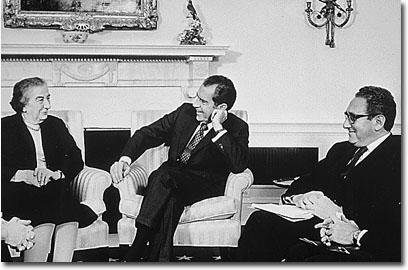
Senior Nixon Administration Officials Considered Confronting Israel over
Nuclear Weapons in 1969 but President Nixon Declined, Deciding that
Washington Could Live with an Undeclared Israeli Bomb, According to Newly
Declassified Documents and a Study in the Bulletin of the Atomic Scientists Posted
- April 28, 2006
National Security Archive Electronic Briefing Book No. 189
Washington, DC, April 28, 2006 - Today the National Security Archive
publishes for the first time 30 recently declassified U.S. government documents
disclosing the existence of a highly secret policy debate, during the first year
of the Nixon administration, over the Israeli nuclear weapons program.
Broadly speaking, the debate was over whether it was feasible--either
politically or technically--for the Nixon administration to try to prevent
Israel from crossing the nuclear threshold, or whether the U.S. should find some
"ground rules" which would allow it to live with a nuclear Israel. The
documents published by the Archive are the primary sources for an article by
Avner Cohen and William Burr, "Israel crosses the threshold," that
appears in the May-June 2006 issue of the Bulletin of the Atomic Scientists.
The article is now available on-line at the Bulletin's Web site. An edited
version of the article will also appear in The Washington Post's Sunday
"Outlook" section on April 30, 2006. http://www.thebulletin.org/
see: http://www.gwu.edu/~nsarchiv/NSAEBB/NSAEBB189/IN-22.pdf
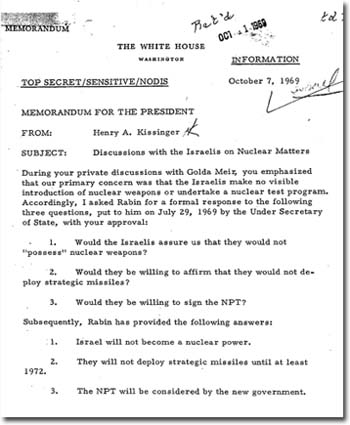
Among the key findings in the article:
1969 was a turning point in the U.S.-Israeli nuclear relationship. Israel
already had a nuclear device by 1967, but it was not until 1968-1969 that U.S.
officials concluded that an Israeli bomb was about to become a physical and
political reality. U.S. government officials believed that Israel was
reaching a state "whereby all the components for a weapon are at hand,
awaiting only final assembly and testing."
In the first months of the Nixon administration, senior officials such as
Secretary of Defense Melvin Laird believed it was important that Washington try
to check Israeli nuclear progress for the sake of stability in the Middle East.
In April 1969 national security adviser Henry Kissinger issued National
Security Study Memorandum (NSSM) 40 requesting the national security bureaucracy
to develop options for dealing with the Israeli nuclear problem. A Senior
Review Group (SRG), chaired by Henry Kissinger, was formed to deliberate and
propose avenues for action to the President.
The SRG outlined policy objectives to President Nixon and proposed initiating a
probe with Israeli Ambassador Rabin designed to achieve those objectives. Nixon
approved the SRG's proposal for action but declined to use deliveries of
advanced F-4 Phantom jets as leverage for the probe. This decision was fateful
for the entire exercise.
On July 29, 1969 Ambassador Rabin was summoned by Acting Secretary of State
Elliott Richardson and Deputy Secretary of Defense David Packard as the first
step in the probe. The two officials pressed Rabin on three issues: (1) the
meaning of Israel's "non-introduction" pledge; (2) Israel's signature
on the NPT; (3) Israel's intentions on the missile issue. Rabin provided no
replies and subsequently proposed to leave the whole issue for the meeting
between President Nixon and Prime Minister Meir in late September.
On the eve of Meir's visit the State Department prepared a background paper for
the President concluding that "Israel might very well now have a nuclear
bomb" and certainly "had the technical ability and material resources
to produce weapons grade uranium for a number of weapons."
No written record of the meeting between President Nixon and Prime Minister Meir
on September 26 is available, but it was a key event in the emergence of the
1969 US-Israeli nuclear understanding. Subsequent documents suggest that Meir
pledged to maintain nuclear restraint-no test, no declaration, no visibility-and
after the meeting the Nixon White House decided to "stand down" on
pressure on Israel.
On October 7, 1969 Ambassador Rabin formally provided his belated answers to the
US questions: Israel will not become a nuclear power; Israel will decide on the
NPT after its election in November; Israel will not deploy strategic missiles
until 1972.
On February 23, 1970 Ambassador Rabin informed Kissinger that, in light of
President Nixon's conversation with Meir in September 1969, Israel "has no
intention to sign the NPT."
Subsequently, the White House decided to end the secret annual U.S. visits to
the Israeli nuclear facility at Dimona. Lower-level officials were not told of
the decision and as late as May 1970 they were under the impression that the
visits could be revived.
By 1975, in keeping with the understanding with Israel, the State Department
refused to tell Congress that it was certain that Israel had the bomb, even
though U.S. intelligence was convinced that it did.
The newly declassified documents are from State Department records and Nixon
Presidential Materials at the National Archives, College Park. They represent,
however, only a small fraction of a
large body of documents on NSSM 40 that remain classified. To
elucidate the U.S. government debate over the issue of the Israeli bomb the
National Security Archive has filed declassification requests for those key
documents.
http://www.sunray22b.net/untold_story_of_israels_bomb.htm
The Untold Story of Israel's Bomb
From http://www.washingtonpost.com/wp-dyn/content/article/2006/04/28/AR2006042801326.html
By Avner Cohen and William Burr
Sunday, April 30, 2006; Page B01
On Sept. 9, 1969, a big brown envelope was delivered to the Oval Office on
behalf of CIA Director Richard M. Helms. On it he had written, "For and to
be opened only by: The President, The White House." The precise contents of
the envelope are still unknown, but it was the latest intelligence on one of
Washington's most secretive foreign policy matters: Israel's nuclear program.
The material was so sensitive that the nation's spymaster was unwilling to share
it with anybody but President Richard M. Nixon himself.
The now-empty envelope is inside a two-folder set labelled "NSSM 40,"
held by the Nixon Presidential Materials Project at the National Archives. (NSSM
is the acronym for National Security Study Memorandum, a series of policy
studies produced by the national security bureaucracy for the Nixon White
House.) The NSSM 40 files are almost bare because most of their documents remain
classified.
With the aid of With the aid of recently declassified documents , we now know
that NSSM 40 was the Nixon administration's effort to grapple with the policy
implications of a nuclear-armed Israel. These documents offer unprecedented
insight into the tense deliberations in the White House in 1969 -- a crucial
time in which international ratification of the nuclear Non-Proliferation Treaty
(NPT) was uncertain and U.S. policymakers feared that a Middle Eastern
conflagration could lead to superpower conflict. Nearly four decades later, as
the world struggles with nuclear ambitions in Iran, India and elsewhere, the
ramifications of this hidden history are still felt.
Israel's nuclear program began more than 10 years before Helms's envelope landed
on Nixon's desk.
In 1958, Israel secretly initiated work at what was to become the Dimona
nuclear research site. Only about 15 years after the Holocaust, nuclear
non-proliferation norms did not yet exist, and Israel's founders believed they
had a compelling case for acquiring nuclear weapons.
In 1961, the CIA estimated that Israel could produce nuclear weapons within
the decade.
The discovery presented a difficult challenge for U.S. policymakers. From their
perspective, Israel was a small, friendly state -- albeit one outside the
boundaries of U.S. security guarantees -- surrounded by larger enemies vowing to
destroy it. Yet government officials also saw the Israeli nuclear program as a
potential threat to U.S. interests. President John F. Kennedy feared that
without decisive international action to curb nuclear proliferation, a world of
20 to 30 nuclear-armed nations would be inevitable within a decade or two.
The Kennedy and Johnson administrations fashioned a complex scheme of annual
visits to Dimona to ensure that Israel would not develop nuclear weapons. But
the Israelis were adept at concealing their activities. By late 1966, Israel had
reached the nuclear threshold, although it decided not to conduct an atomic
test.
By the time Prime Minister Levi Eshkol visited President Lyndon B. Johnson in
January 1968, the official State Department view was that despite Israel's
growing nuclear weapons potential, it had "not embarked on a program to
produce a nuclear weapon." That assessment, however, eroded in the months
ahead. By the fall, Assistant Defence Secretary Paul C. Warnke concluded that
Israel had already acquired the bomb when Israeli Ambassador Yitzhak Rabin
explained to him how he interpreted Israel's pledge not to be the first country
to introduce nuclear weapons into the region. According to Rabin, for nuclear
weapons to be introduced, they needed to be tested and publicly declared. Implicitly,
then, Israel could possess the bomb without "introducing" it.
The question of what to do about the Israeli bomb would fall to Nixon.
Unlike his Democratic predecessors, he and his national security adviser, Henry
A. Kissinger, were initially skeptical about the effectiveness of the NPT. And
though they may have been inclined to accommodate Israel's nuclear ambitions,
they would have to manage senior State Department and Pentagon officials whose
perspectives differed. Documents prepared between February and April 1969 reveal
a great sense of urgency and alarm among senior officials about Israel's nuclear
progress.
As Defence Secretary Melvin R. Laird wrote in March 1969, these
"developments were not in the United States' interests and should, if at
all possible, be stopped." Above all, the Nixon administration was
concerned that Israel would publicly display its nuclear capabilities.
Apparently prompted by those high-level concerns, Kissinger issued NSSM 40 --
titled Israeli Nuclear Weapons Program -- on April 11, 1969. In it he asked
the national security bureaucracy for a review of policy options toward Israel's
nuclear program. In the weeks that followed, the issue was taken up by a senior
review group (SRG), chaired by Kissinger, that included Helms, Undersecretary of
State Elliot Richardson, Deputy Defence Secretary David Packard and Joint Chiefs
Chairman Earle Wheeler.
...
Over time, the tentative Nixon-Meir understanding became the foundation for a
remarkable U.S.-Israeli deal, accompanied by a tacit but strict code of
behaviour to which both nations closely adhered. Even during its darkest
hours in the 1973 Yom Kippur War, Israel was cautious not to make any public
display of its nuclear capability.
Yet set against contemporary values of transparency and accountability, the
Nixon-Meir deal of 1969 now stands as a striking and burdensome anomaly.
Israel's nuclear posture is inconsistent with the tenets of a modern liberal
democracy. The deal is also burdensome for the United States, provoking claims
about double standards in U.S. nuclear non-proliferation policy.
It is especially striking to compare the Nixon administration's stance toward
Israel in 1969 with the way Washington is trying to accommodate India in 2006.
As problematic as the proposed nuclear pact with New Delhi is, it at least
represents an effort to deal openly with the issue.
Unlike the case of Iran today -- where a nation is publicly violating its NPT
obligations and where the United States and the international community are
acting in the open -- the White House in 1969 addressed the Israeli weapons
program in a highly secretive fashion. That kind of deal-making would be
impossible now.
Without open acknowledgment of Israel's nuclear status, such ideas as a
nuclear-free Middle East, or even the inclusion of Israel in an updated NPT
regime, cannot be discussed properly. It is time for a new deal to replace the
Nixon-Meir understandings of 1969, with Israel telling the truth and finally
normalizing its nuclear affairs.
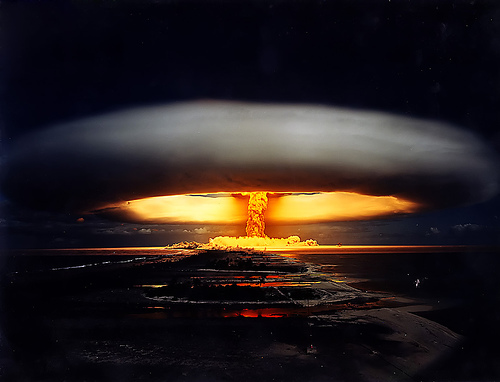 Licorne,
July 3rd, 1970
Licorne,
July 3rd, 1970
These are four scanned pictures of hardcopies I possess of the French nuclear
test codenamed Licorne, which was fired on July 3rd, 1970 . The French army
had those pictures taken on site. Those pictures were readily available at the
time at Tahiti and Moruroa military base, and mine have been quite degraded. I
scanned them and tried to restore them.
http://en.wikipedia.org/wiki/France_and_weapons_of_mass_destruction
...
In 1957, soon after Suez and the resulting diplomatic tension with both the USSR
and the United States, French president René Coty decided the creation of the
C.S.E.M. in the then French Sahara, a new nuclear tests facility replacing the
C.I.E.E.S.[7] With the return of Charles de Gaulle to the presidency of France
in the midst of the May 1958 crisis, the final decisions to build a bomb were
taken, and a successful test took place in 1960. Since then France has developed
and maintained its own nuclear deterrent.
...
In 1956 the French agreed to secretly build the Dimona nuclear reactor in Israel
and soon after agreed to construct a reprocessing plant for the extraction of
plutonium at the site. The following year Euratom was created and under cover of
the peaceful use of nuclear power the French signed deals with Germany and Italy
to work together on nuclear weapons development.[8] The West German Chancellor
Konrad Adenauer told his cabinet that he "wanted to achieve, through
EURATOM, as quickly as possible, the chance of producing our own nuclear
weapons".[9] The idea was short-lived. In 1958 de Gaulle became President
and Germany and Italy were excluded.
France is understood to have tested neutron or enhanced radiation bombs in the
past, apparently leading the field with an early test of the technology in 1967
[10] and an 'actual' neutron bomb in 1980
...
Saharan experiments centers (1960–1966)
Further information: Gerboise Bleue and Agathe (atomic test)
A series of atmospheric tests was conducted by the Centre Saharien d'Expérimentations
Militaires ("Saharan Military Experiments Center") from February 1960
until April 1961.
The first French atmospheric nuclear test, called "Gerboise bleue"
("blue jerboa") took place on 13 February 1960 in the French Sahara,
during the Algerian War (1954–62). The explosion took place at 40 km from the
military base of Reggane, which is the last town on the Tanezrouft Track heading
south across the Sahara to Mali, and 700 km south of Béchar.[14] The device had
a 70 kiloton yield. Although Algeria became independent in 1962 France continued
nuclear tests there until 1966 although the later tests were underground rather
than atmospheric. The General Pierre Marie Gallois was named le père de la
bombe A ("Father of the A-bomb").
Three other atmospheric tests were carried out from 1 April 1960 to 25 April
1961. These four atmospheric tests were carried out at with a forward base at
Hammoudia near Reggane. Military, workers and the nomadic Touareg population of
the region were assisted at the test sites, without any significant protection.
At most, a shower after each test according to L'Humanité.[15] Gerboise Rouge
(5kt), the third atomic bomb, half as powerful as Hiroshima, exploded on 27
December 1960, provoking protests from Japan, USSR, Egypt, Morocco, Nigeria and
Ghana.[16]
After the independence of Algeria on 5 July 1962, following the 19 March Evian
agreements, the French military moved to In Ecker, also in the Algerian Sahara.
The Evian agreements included a secret article which stated that "Algeria
concede... to France the use of certain air bases, terrains, sites and military
installations which are necessary to it [France]" during five years.
...
Pacific experiments center (1966–1996)
A total of 193 nuclear tests were carried out in Polynesia from 1966 to 1996.
[edit] Atmospheric tests at Mururoa & Fangataufa
Further information: Canopus (nuclear test)
The French began development of the hydrogen bomb and built a new test range on
the French Polynesian islands of Mururoa and Fangataufa. On 24 August 1968
France succeeded in detonating a thermonuclear weapon - codenamed Canopus - over
Fangataufa. A fission device ignited a lithium 6 deuteride secondary inside
a jacket of highly enriched uranium to create a 2.6 megaton blast which left the
whole atoll uninhabitable because of radioactive contamination.
...
By 1968 only France and China were detonating nuclear weapons in the open air
and the contamination caused by the H Bomb blast led to a global protest
movement against further French atmospheric tests
http://en.wikipedia.org/wiki/Marcoule
Marcoule Nuclear Site (French: Site nucléaire de Marcoule) is a nuclear
plant in the Chusclan and Codolet communes, near Bagnols-sur-Cèze in the Gard
department of France, which is in the touristic, wine and agricultural Côtes-du-Rhône
region. The plant is around 25 km north west of Avignon, on the banks of the
Rhone.
Operational since 1956, Marcoule is a gigantic site run by the atomic energy
organization Commissariat à l'Énergie Atomique (CEA) and Areva NC.
The first industrial and military plutonium experiments took place in
Marcoule. Diversification of the site was started in the 1970s with the
creation of the Phénix prototype fast breeder reactor, which was operational
until 2009, and is nowadays an important site for decommissioning nuclear
facilities activities. The Phénix reactor is likely to be succeeded by the
sodium-cooled fast reactor ASTRID (Advanced Sodium Technical Reactor for
Industrial Demonstration) in the 2015-2020 time frame.
http://www.american-buddha.com/lit.samsonoptionhersh.2.htm
...
French officials reciprocated the Israeli trust: Israeli scientists were the
only foreigners allowed access throughout the secret French nuclear complex at
Marcoule. Israelis were said to be able to roam "at will."
One obvious reason for the carte blanche was the sheer brilliance of the Israeli
scientists and their expertise, even then, in computer technology. The French
would remain dependent for the next decade-the first French nuclear test took
place in 1960 -- on Israeli computer skills.
A second reason for the Israeli presence at Marcoule was emotional: many
French officials and scientists had served in the resistance and maintained
intense feelings about the Holocaust. And many of France's leading nuclear
scientists were Jewish and strong supporters of the new Jewish state, which was
emerging-to the delight of these men-as France's closest ally in the Middle
East.
info on Baron Erich Von Goldschmidt Rothschild - he seems to have sold
his "famous" art/book collection in 1930-31 with the rise of Hitler
and he must have left germany during the war. I have not been able to find a bio
- All I know is he lived in Germany and lived from 1899-1987...
the Goldschmidt-Rothschild branch:
Goldschmidt-Rothschild
family is originally from Frankfurt am Main in Germany .
Its members are descended from the union in 1878 in Minna Caroline von
Rothschild (1857-1903), a daughter of Baron Wilhelm Carl von Rothschild
(1828-1901), the last representative of the branches in Frankfurt and Naples in
the famous family, and Banker's Maximilian Benedict Goldschmidt . It
changed its name to Goldschmidt-Rothschild in 1878, and was ennobled (with the
title of baron ) in 1903 .
The name Rothschild in Frankfurt this will remain so until his death in 1940 in
his palace at Bockenheimer Landstrasse where the Nazis had allowed to keep a
room
http://translate.google.com/translate?hl=en&sl=de&tl=en&u=http%3A%2F%2Fde.wikipedia.org%2Fwiki%2FMaximilian_von_Goldschmidt-Rothschild
http://de.wikipedia.org/wiki/Maximilian_von_Goldschmidt-Rothschild
Maximilian von Goldschmidt came in 1862 in Frankfurt in his father's bank
Hayum Benedict Goldschmidt (1798-1873), which he shared with his brother Adolf
Hayum Benedict Goldschmidt led (1838-1918) until the death of her father's
Then the brothers decided to give up the banking business and to leave
Frankfurt. . While Adolphe first to Paris and then to London , drew Maximilian
went to Berlin .
Not least through his marriage to the heiress Minna Caroline Rothschild Baroness
von Rothschild (1857-1905) in 1878, he was regarded as the richest individual in
the richest family of the German Reich . With an estimated fortune of 163
million gold marks, he was even richer than the German Emperor.
...
Maximilian and his wife, Minna, had five children:
...
Erich (1894-1987) - founded in exile in the U.S., where the Egoro Corp..
Israel Nuke tests:
http://www.au.af.mil/au/awc/awcgate/cpc-pubs/farr.htm
THE THIRD TEMPLE'S HOLY OF HOLIES: ISRAEL'S NUCLEAR WEAPONS
by Warner D. Farr, LTC, U.S. Army
...
In 1972, two Israeli scientists, Isaiah Nebenzahl and Menacehm Levin, developed
a cheaper, faster uranium enrichment process. It used a laser beam for
isotope separation. It could reportedly enrich seven grams of Uranium 235
sixty percent in one day.80 Sources later reported that Israel was using
both centrifuges and lasers to enrich uranium.81
Questions remained regarding full-scale nuclear weapons tests. Primitive
gun assembled type devices need no testing. Researchers can test
non-nuclear components of other types separately and use extensive computer
simulations. Israel received data from the 1960 French tests, and one
source concludes that Israel accessed information from U.S. tests conducted in
the 1950s and early 1960s. This may have included both boosted and
thermonuclear weapons data.82
Underground testing in a hollowed out cavern is difficult to detect. A
West Germany Army Magazine, Wehrtechnik, in June 1976, claimed that Western
reports documented a 1963 underground test in the Negev. Other reports
show a test at Al-Naqab, Negev in October 1966.83
A bright flash in the south Indian Ocean, observed by an American satellite
on 22 September 1979, is widely believed to be a South Africa-Israel joint
nuclear test. It was, according to some, the third test of a neutron bomb.
The first two were hidden in clouds to fool the satellite and the third was an
accident—the weather cleared.84
Experts differ on these possible tests. Several writers report that the
scientists at Los Alamos National Laboratory believed it to have been a nuclear
explosion while a presidential panel decided otherwise.85 President Carter
was just entering the Iran hostage nightmare and may have easily decided not to
alter 30 years of looking the other way.86 The explosion was almost
certainly an Israeli bomb, tested at the invitation of the South Africans.
It was more advanced than the “gun type” bombs developed by the South
Africans.87 One report claims it was a test of a nuclear artillery
shell.88 A 1997 Israeli newspaper quoted South African deputy foreign
minister, Aziz Pahad, as confirming it was an Israeli test with South African
logistical support.89
Controversy over possible nuclear testing continues to this day.
In June 1998, a Member of the Knesset accused the government of an underground
test near Eilat on May 28, 1998. Egyptian “nuclear experts” had made
similar charges. The Israeli government hotly denied the claims
They release this
info in 2007: George Koval - also connections to the Soviet J.A.R.
http://www.nytimes.com/2007/11/12/us/12koval.html?pagewanted=all
Spy’s Path: Iowa to A-Bomb to Kremlin Honor
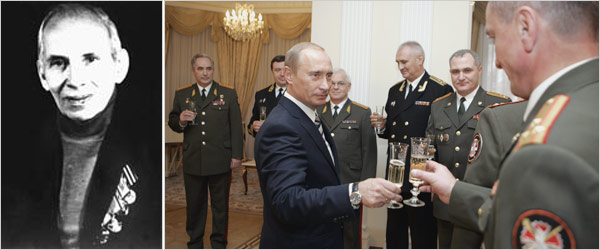
President Vladimir V. Putin of Russia and intelligence officers at a ceremony
posthumously honoring George Koval, left, an American-born Soviet spy who
infiltrated the Manhattan Project.
By WILLIAM J. BROAD
Published: November 12, 2007
He had all-American cover: born in Iowa, college in Manhattan, Army buddies with
whom he played baseball.
George Koval also had a secret. During World War II, he was a top Soviet spy,
code named Delmar and trained by Stalin’s ruthless bureau of military
intelligence.
Atomic spies are old stuff. But historians say Dr. Koval, who died in his 90s
last year in Moscow and whose name is just coming to light publicly, was
probably one of the most important spies of the 20th century.
On Nov. 2, the Kremlin startled Western scholars by announcing that President
Vladimir V. Putin had posthumously given the highest Russian award to a Soviet
agent who penetrated the Manhattan Project to build the atom bomb.
The announcement hailed Dr. Koval as “the only Soviet intelligence
officer” to infiltrate the project’s secret plants, saying his work
“helped speed up considerably the time it took for the Soviet Union to develop
an atomic bomb of its own.”
Since then, historians, scientists, federal officials and old friends have raced
to tell Dr. Koval’s story — the athlete, the guy everyone liked, the genius
at technical studies. American intelligence agencies have known of his
betrayal at least since the early 1950s, when investigators interviewed his
fellow scientists and swore them to secrecy.
...
| - - - -
http://en.wikipedia.org/wiki/George_Koval
George Abramovich Koval (Russian: Жорж (Георгий)
Абрамович
Коваль, Zhorzh Abramovich Koval, December
25, 1913 – January 31, 2006) was a Soviet intelligence officer. According to
Russian sources, Koval's infiltration of the Manhattan Project as a Glavnoye
Razvedyvatel'noye Upravleniye (GRU) agent "drastically reduced the amount
of time it took for Russia to develop nuclear weapons." [1]
Koval was born to Jewish immigrants in Sioux City, Iowa, USA.
Shortly after reaching adulthood he traveled with his parents to the Soviet
Union to settle in the Jewish Autonomous Region near the Chinese border.
Koval was recruited by the Soviet Main Intelligence Directorate, trained, and
assigned the code name DELMAR. He returned to the United States in 1940 and was
drafted into the US Army in early 1943. Koval worked at atomic research
laboratories and, according to the Russian government, relayed back to the
Soviet Union information about the production processes and volumes of the
polonium, plutonium, and uranium used in American atomic weaponry, and
descriptions of the weapon production sites.
After the war, Koval left on a European vacation but never returned to the
United States.
In 2007 Russian President Vladimir Putin posthumously awarded Koval the Hero
of the Russian Federation decoration for "his courage and heroism while
carrying out special missions".
...
He graduated in 1929 at the age of 15. Koval studied electrical engineering at
the University of Iowa for the next two-and-a-half years. Meanwhile, his
parents left Sioux City as the Great Depression deepened. Abram Koval became the
secretary for ICOR, the Organization for Jewish Colonization in the Soviet
Union.[3] Founded by American Jewish Communists in 1924, the group helped to
finance and publicize the development of the "Jewish Autonomous Region"
– the Communist answer to Jewish emigration to the British Mandate of
Palestine then being undertaken by the Zionist movement.[4]
The Koval family emigrated in 1932, traveling with a United States family
passport.[3] They settled in Birobidzhan, near the border of Manchuria
...
George Koval improved his Russian language skills in the collective and began
studies at the Mendeleev Institute of Chemical Technology in 1934. At the
university he met and married fellow student Lyudmila Ivanova. Koval graduated
with honors in five years and received Soviet citizenship
...
Later, Koval was recruited by the Soviet Main Intelligence Directorate (Главное
Разведывательное
Управление), or GRU.
By the time he received his degree he had left Moscow under orders as part of a
subterfuge.
He was drafted into the Soviet army in 1939 to explain his sudden disappearance
from the city.
Though his parents had relinquished their US family passport, Koval returned
to the United States in 1940,[5] replacing a spy recalled during Stalin's
purges.[6]
Arriving in San Francisco, he made his way to New York City. According to Arnold
Kramish, an American colleague he befriended and with whom he re-established
contact in 2000, it was there that Koval assumed deputy command of the local GRU
cell. This outpost operated under the cover of the Raven Electric Company, a
supplier to firms such as General Electric. Koval told coworkers he was a native
New Yorker and an only child.
He ingratiated himself with everyone he met.[5] While Koval originally
worked under a pseudonym, gathering information on toxins for use in chemical
weapons, his handlers decided to have him work under his real name.[7]
During the beginning of World War II, President Franklin D. Roosevelt had
re-introduced the draft (conscription) in September 1940, and Koval registered
for it on January 2, 1941. Raven Electric Company secured him a year's deferment
from service until February 1942.
According to historian Vladimir Lota, Koval's handlers wanted him to steal
information about chemical weapons, and felt that he would not be able to do
so while drafted.
When the deferment expired, however, Koval was inducted into the United States
Army. He received basic training at Fort Dix in New Jersey before being sent to
the Citadel in Charleston, South Carolina. There, Koval served as a private in
the 3410th Specialized Training and Reassignment Unit. On August 11, 1943, he
was transferred to the Army Specialized Training Program, a unit established in
December 1942 to provide talented enlistees with an education and technical
training
...
...the Manhattan Project. Koval was assigned to Oak Ridge, Tennessee; at
the time, Project scientists were researching enriched uranium and
plutonium-based bombs, with the Oak Ridge laboratories central to the
development of both.[8] The Project suffered from a lack of human resources, and
asked the Army for technically qualified men.[7]
Oak Ridge workers operating mass spectrometers. Koval's job as a health
officer meant he had his own car and access to many sensitive areas of the
facility.Koval enjoyed free access to much of Oak Ridge;[7] he was made a
"health physics officer", and monitored radiation levels across the
facility.
According to Federal Bureau of Investigation records, the job gave him
top-secret security clearance
Koval was transferred from
Oak Ridge to a top-secret lab in Dayton, Ohio on June 27, 1945, where polonium
initiators were fabricated.
...
The initiator for the plutonium bomb was, according to Russian military
officials, "prepared to the 'recipe' provided by military intelligence
agent Delmar [Koval]". [9]
See also:
http://www.smithsonianmag.com/history-archaeology/Iowa-Born-Soviet-Trained.html?c=y&page=1
George Koval: Atomic Spy Unmasked
Iowa-born and army-trained,
how did George Koval manage
to steal a critical U.S. atom bomb secret for the Soviets, that is only now
coming to light?
By Michael Walsh Smithsonian magazine, May 2009
http://en.wikipedia.org/wiki/Jewish_Autonomous_Oblast
The Jewish Autonomous Oblast (Russian: Евре́йская
автоно́мная
о́бласть, Yevreyskaya avtonomnaya
oblast; Yiddish: ייִדישע
אווטאָנאָמע
געגנט, yidishe avtonome gegnt[12]) is a federal
subject of Russia (an autonomous oblast) situated in the Russian Far East,
bordering Khabarovsk Krai and Amur Oblast of Russia and Heilongjiang province of
China. Its administrative center is the town of Birobidzhan.
Soviet authorities established the autonomous oblast in 1934. It was the
result of Joseph Stalin's nationality policy, which allowed for the Jews of the
Soviet Union to receive a territory in which to pursue Yiddish cultural heritage
within a socialist framework
...
According to Joseph Stalin's national policy, each of the national groups that
formed the Soviet Union would receive a territory in which to pursue cultural
autonomy in a socialist framework. In that sense, it also responded to two
supposed threats to the Soviet state:
Judaism, which ran counter to official state policy of atheism
Zionism — the advocacy of a Jewish national state in Palestine — which
countered Soviet views of nationalism.
The Soviets envisaged setting up a new "Soviet Zion", where a
proletarian Jewish culture could be developed. Yiddish, rather than Hebrew,
would be the national language, and a new socialist literature and arts would
replace religion as the primary expression of culture.
Stalin's theory on the National Question regarded a group as a nation only if it
had a territory, and since there was no Jewish territory, per se, the Jews were
not a nation and did not have national rights. Jewish Communists argued that the
way to solve this ideological dilemma was by creating a Jewish territory, hence
the ideological motivation for the Jewish Autonomous Oblast. Politically, it
was also considered desirable to create a Soviet Jewish homeland as an
ideological alternative to Zionism and the theory put forward by Socialist
Zionists such as Ber Borochov that the Jewish Question could be resolved by
creating a Jewish territory in Palestine. Thus Birobidzhan was important for
propaganda purposes as an argument against Zionism which was a rival ideology to
Marxism among left-wing Jews.
http://www.geschichteinchronologie.ch/SU/EncJudaica_Birobidzhan-ENGL.html
"Soviet Union": The Jewish story about Birobidzhan (Birobidjan)
1928-1970

Flag of Birobidzhan province
http://en.wikipedia.org/wiki/Organization_for_Jewish_Colonization_in_Russia
The Organization for Jewish Colonization in Russia (Idishe Kolonizatsie
Organizatsie in Rusland), commonly known by its transliterated acronym of ICOR,
was a Communist-sponsored mass organization in North America devoted to
supporting settlement in the Jewish socialist republic of Birobidzhan in the
Soviet Union. The organization was founded in the United States in 1924 and
soon spread to Russia.
stablishment
The founding meeting was held in New York City in December 1924 and the
initial mission of the organization was to raise money to fund Jewish collective
farms in Crimea and to provide a humanitarian alternative for Jews facing
anti-Semitism in Europe.
One of ICOR's initial
patrons was Julius Rosenwald, president of Sears, Roebuck and Company who
contributed more than $2 million to ICOR.[1]
When, in 1928, the Soviet Union abandoned the idea of Jewish settlement in
Crimea and endorsed instead the eventual formation of a Jewish Autonomous
Republic in the eastern USSR, ICOR followed suit. ICOR worked closely with
the Komzet, the Soviet agency facilitating Jewish settlement, and its partner,
the OZET.
...
The chief American behind the establishment of the new organization was
William W. Cohen, a banker and stockbroker who had been a Congressman from New
York's 17th Congressional District from 1926 to 1928.[2] Cohen saw the
establishment of a Jewish Autonomous Region in the USSR as providing an
important "haven for the salvage and rehabilitation of many thousands of
Jews suffering in the infernos of central and eastern Europe" and supported
the establishment of Ambidjan with his money, time, and effort...
Quote:
Evidence
suggests that "Red China's" first explosion of a nuclear device was in
fact a joint venture between Israel and Red China.
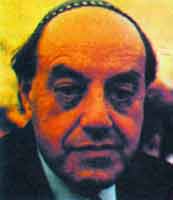 Shaul
Eisenberg, Merchant of Death
Shaul
Eisenberg, Merchant of Death
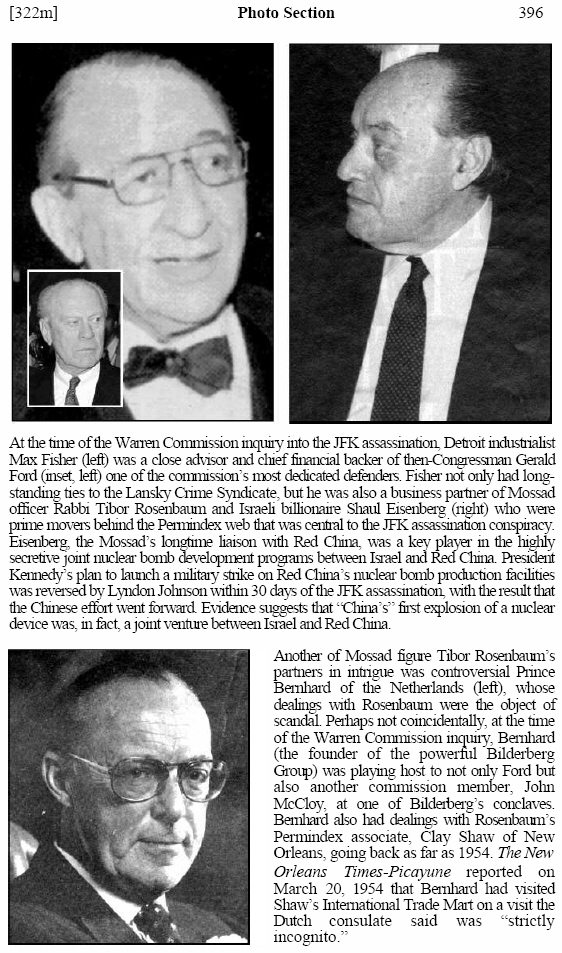
| - - - -
http://www.kantakji.com/fiqh/Files/Economics/c363.pdf
The Global Political Economy of Israel
Jonathan Nitzan and Shimshon Bichler
First published 2002 by Pluto Press
...
By now, our reader must find it a little difficult to make head and tail of this
complicated genealogy of the military, politics and business – and yet the
plot continues to thicken.
The Elyashar clan, with which these figures were intermarried, dates back to the
Ottoman period. The family represented various European business interests
and Zionist organisations, and generally got along well with the regional
superpower of the day, supplying food to the Turkish army during the First World
War (in partnership with the famous Palestinian Hussaini family), and to the
British forces during the Second World War. From this perspective, Israel’s
independence in 1948 was somewhat of a setback, particularly since the
Israeli Defence Ministry seemed to favour ‘Ashkenazi’ suppliers like Saul
Eisenberg and Marcus Katz, over ‘Sephardi’ dealers such as the
Elyashars.
...
Like many of its contemporaries, the Saharov family started its career in
the wood business, from which it ventured into new areas such as insurance,
banking, weaponry and, of course, public service.
Their eldest son, Yekhezkel, was Chaim Weitzman’s bodyguard and
Israel’s first chief-of-police.
His deputy in the force was Amos Ben-Gurion, who was nominated for the post
while his father, David Ben-Gurion, was Prime Minister. In their infinite
wisdom, both Chief Saharov and Deputy Ben-Gurion were hectically mixing public
duty with private business, and eventually, after dozens of scandals, were
forced to quit their posts. Both were given a second chance.
Amos Ben-Gurion was made manager of Israel’s largest clothing company, Ata,
which belonged to Swiss
financier Tibor Rosenbaum, and whose Israeli representative at the time was
Amos Manor, former head of Shin Beit (Israel’s internal security service). When
Rosenbaum’s Banque de Crédit Internationale collapsed with much fanfare in
the mid-1970s, Ata was passed on to Saul Eisenberg, who
replaced Amos Ben-Gurion with Yossef Hermelin, another former head of the Shin
Beit. ...